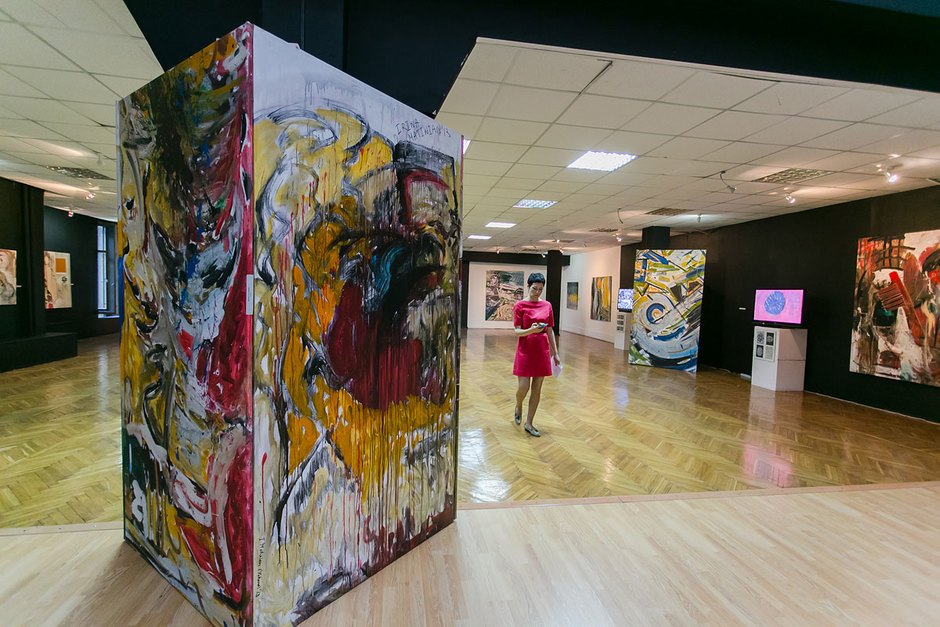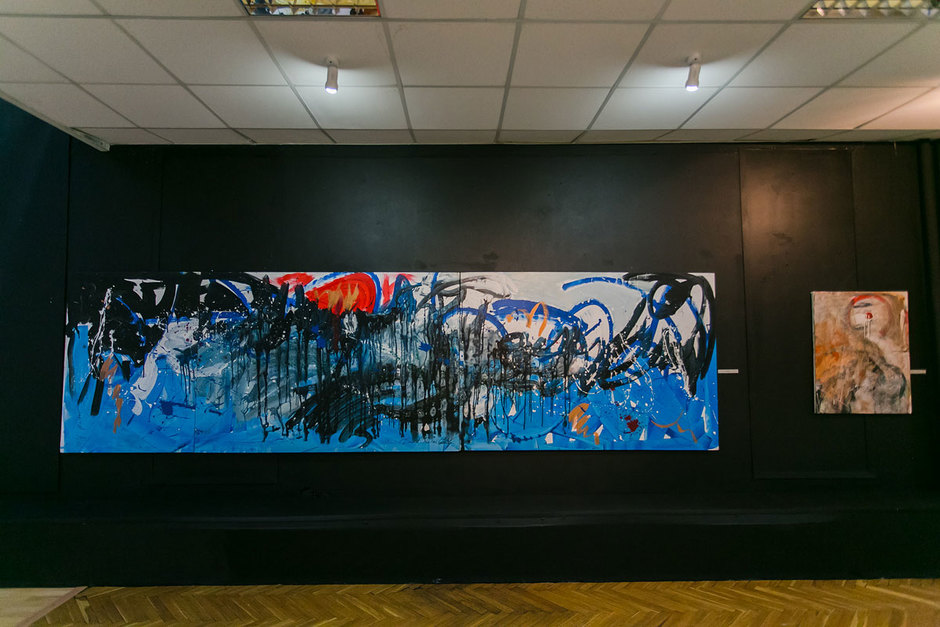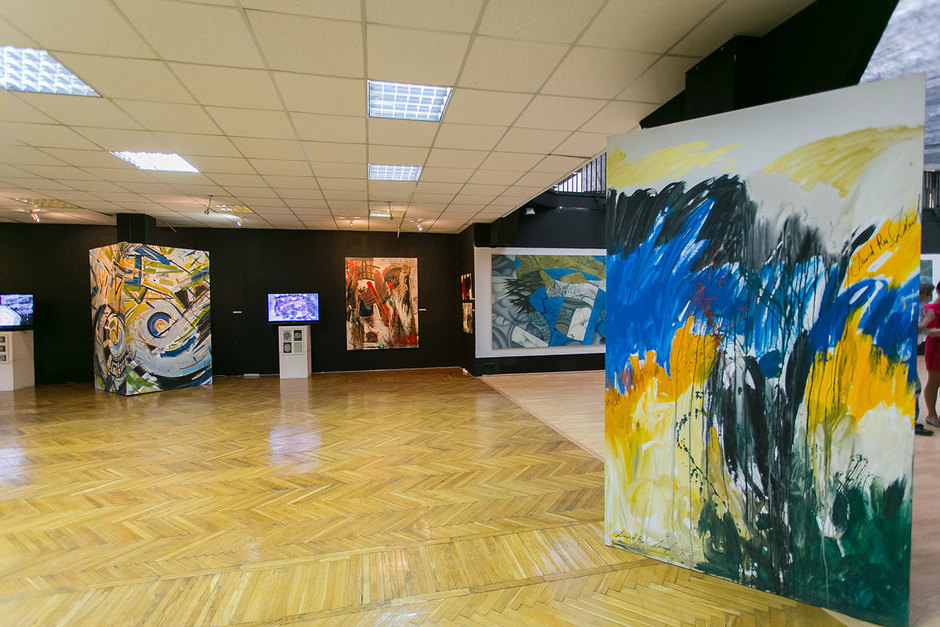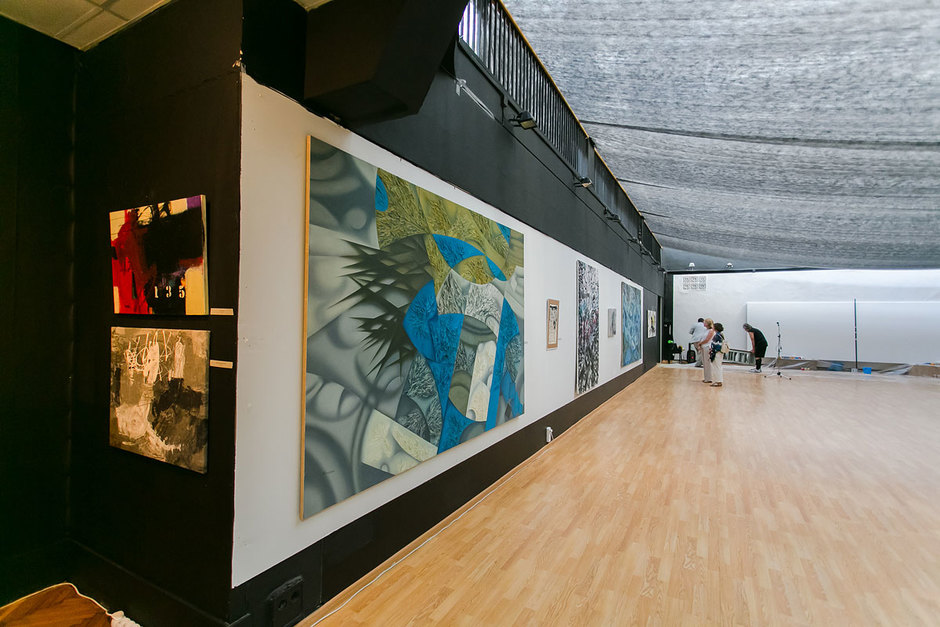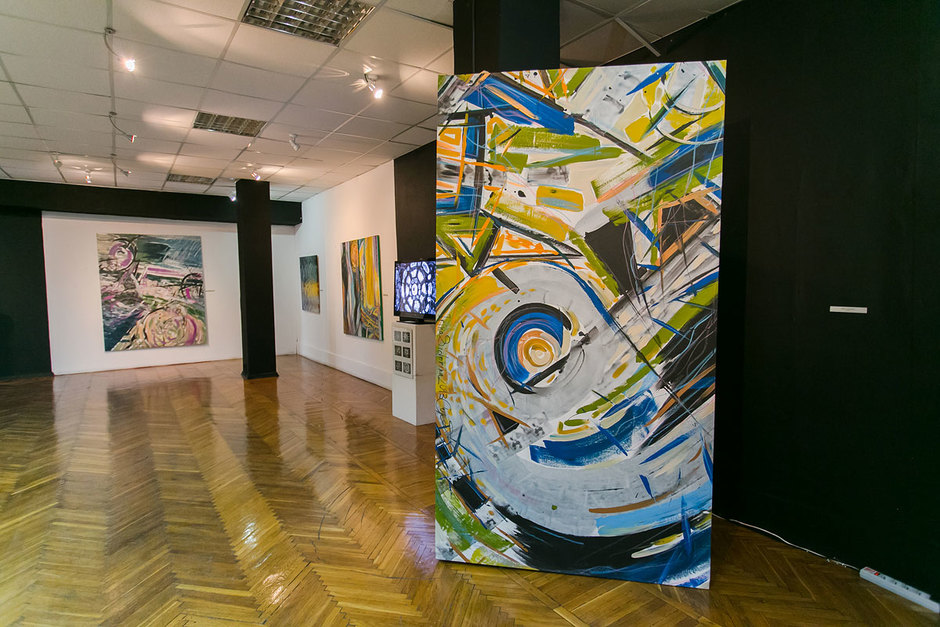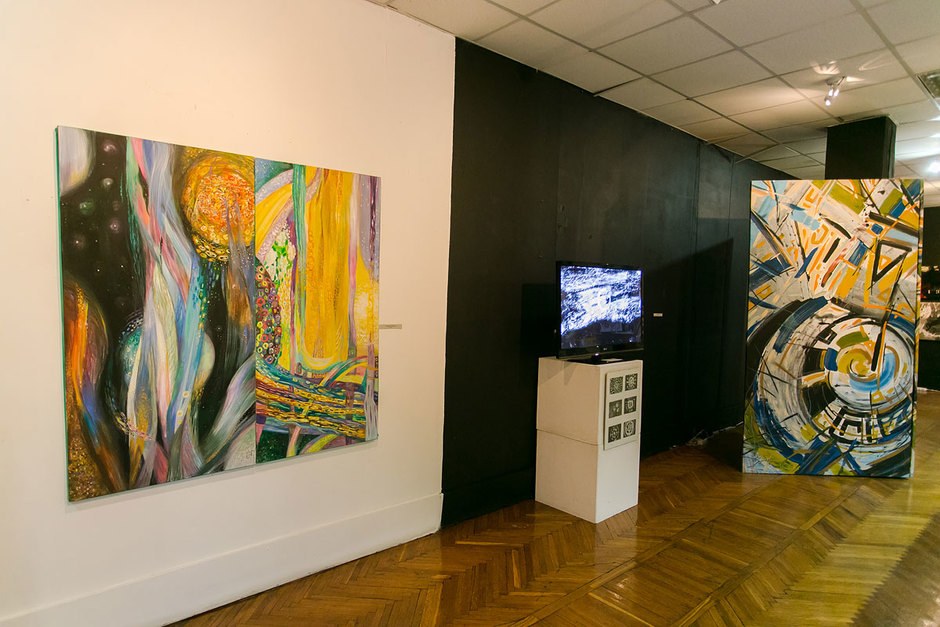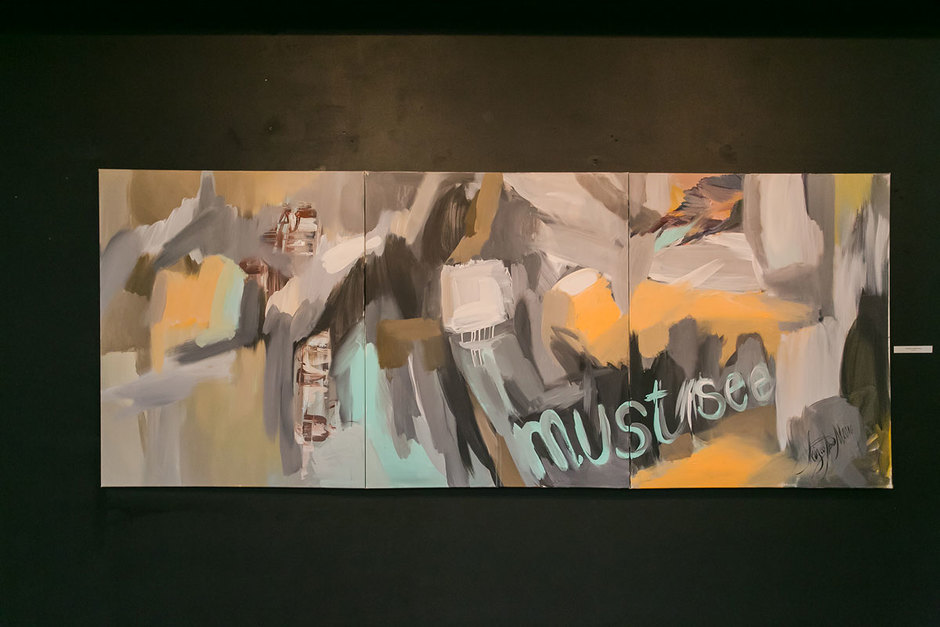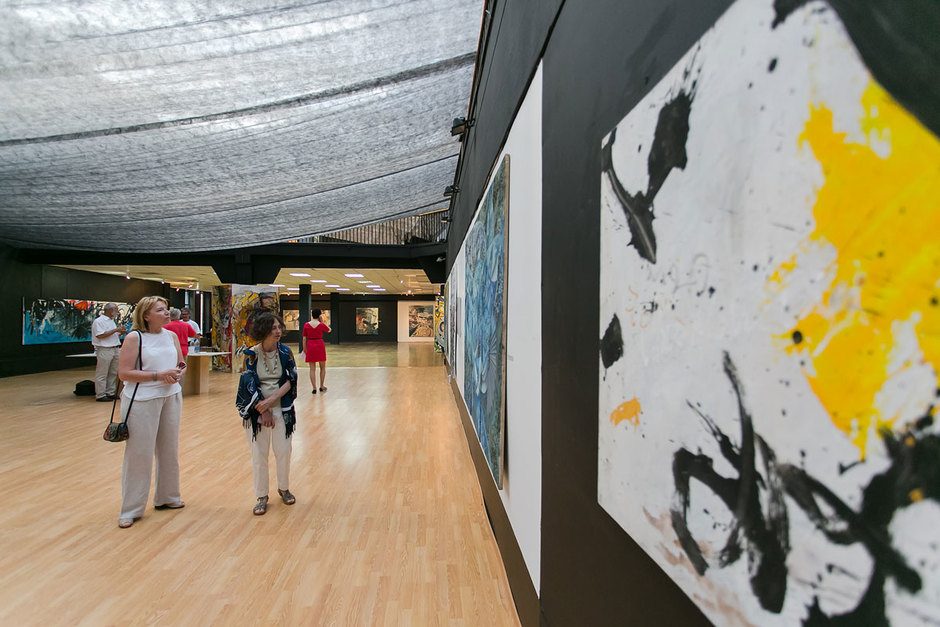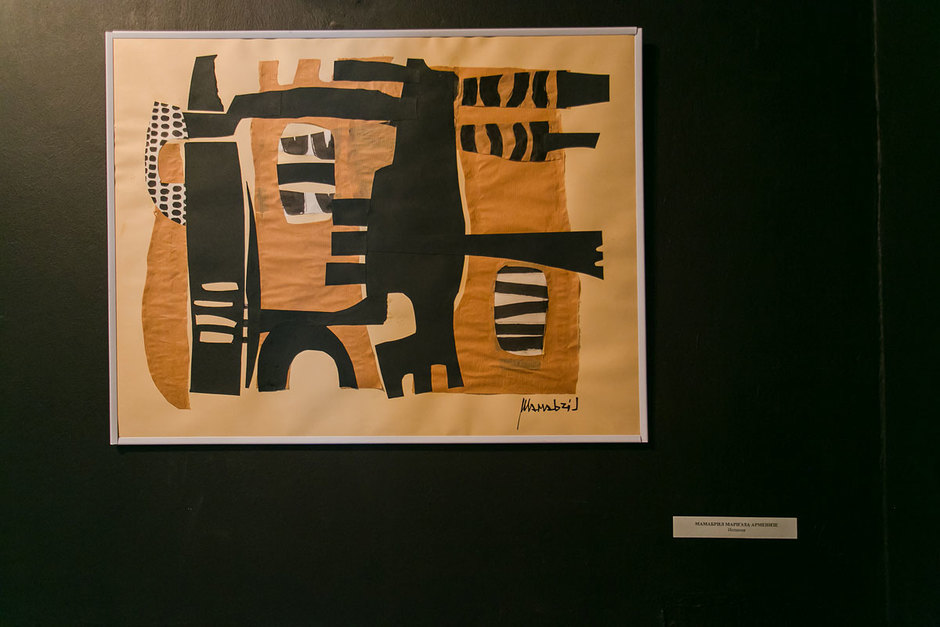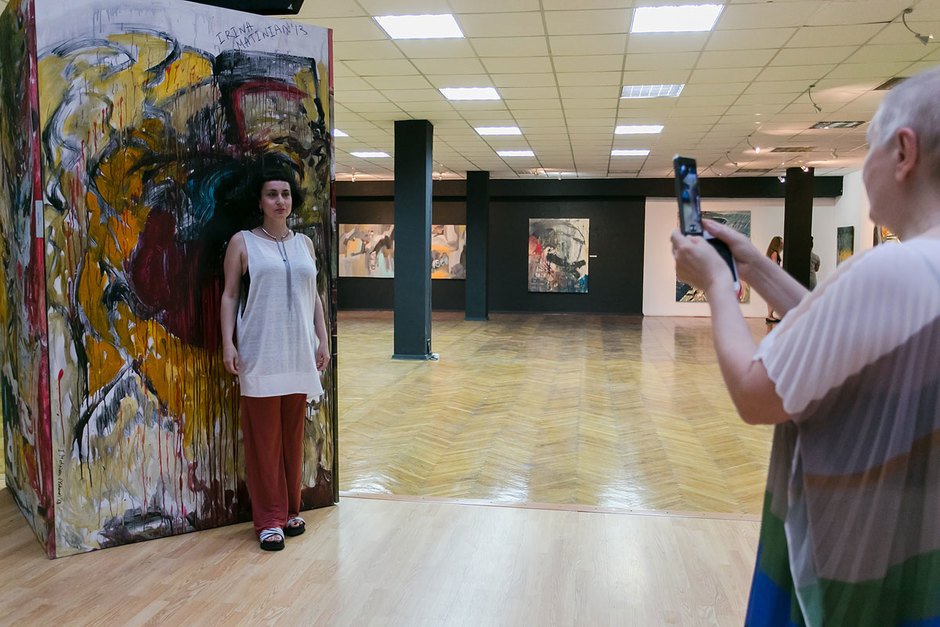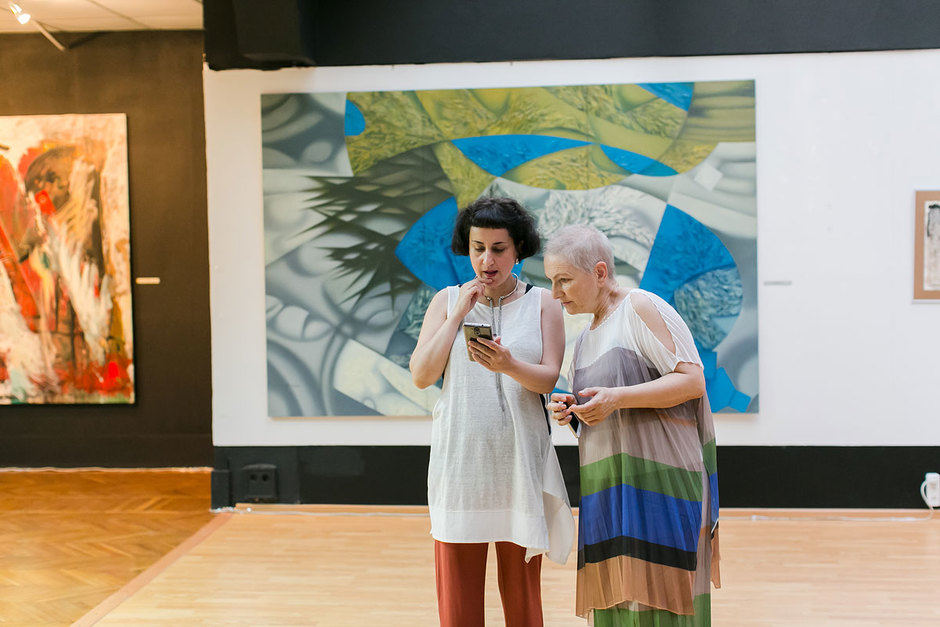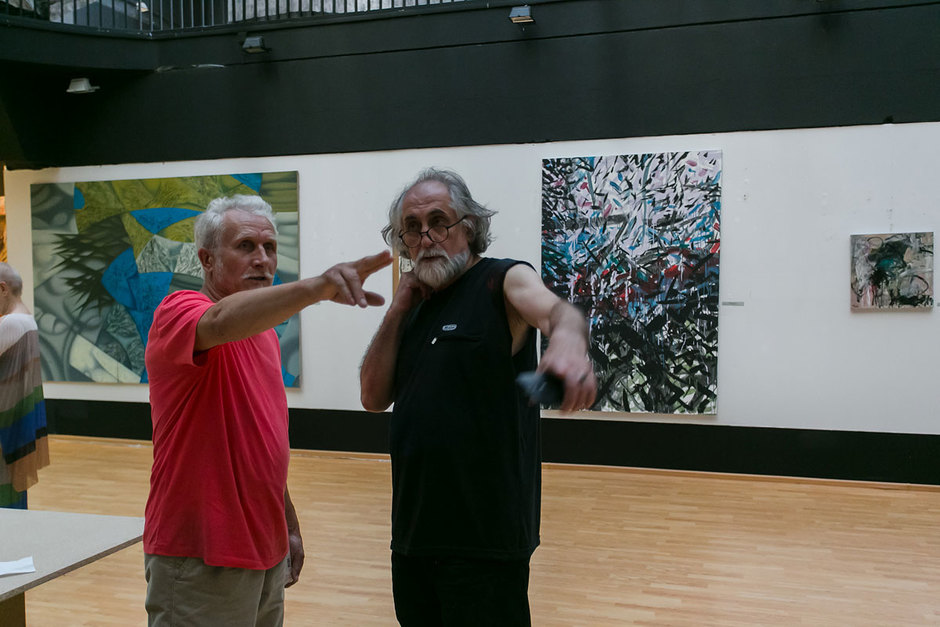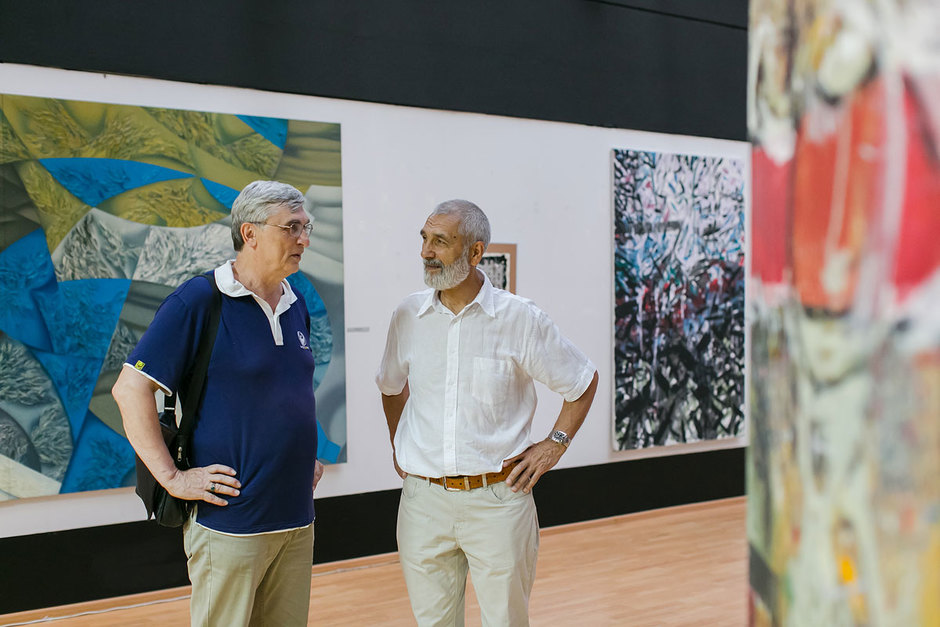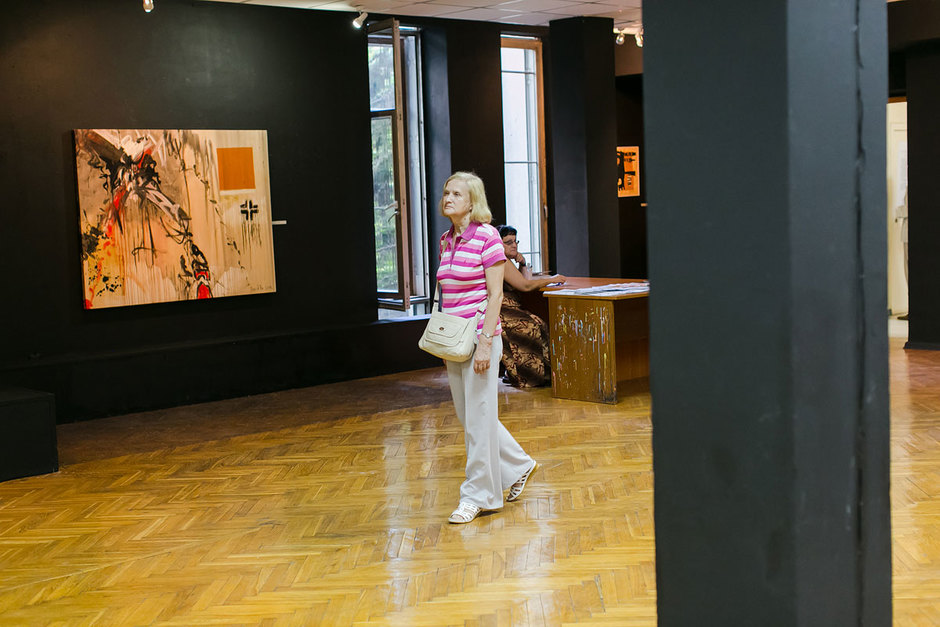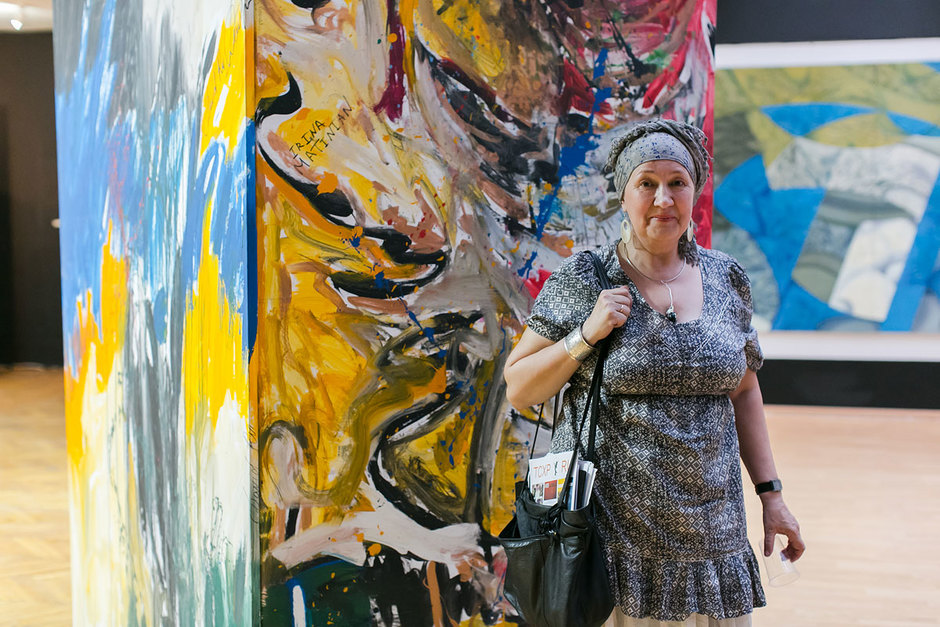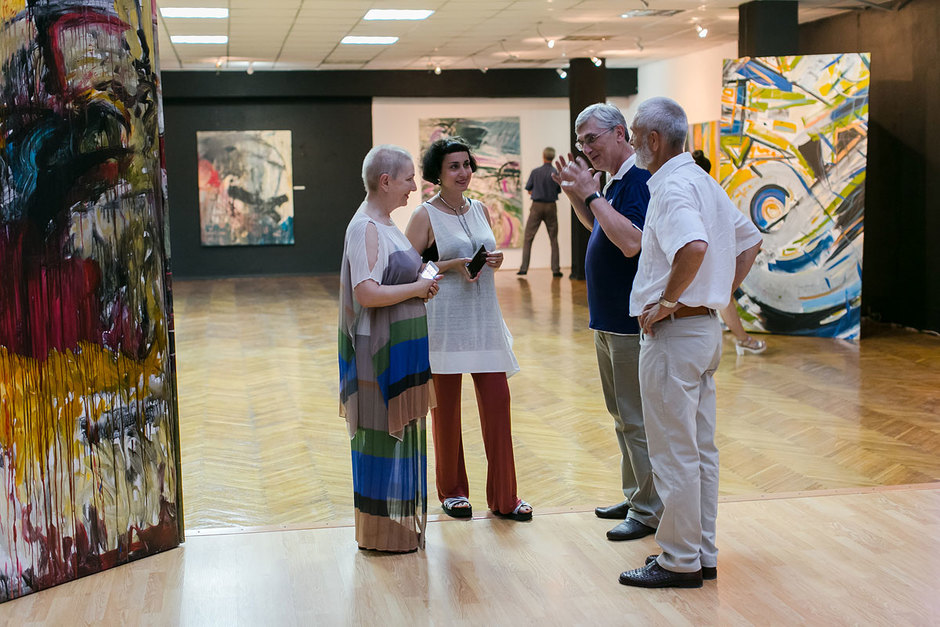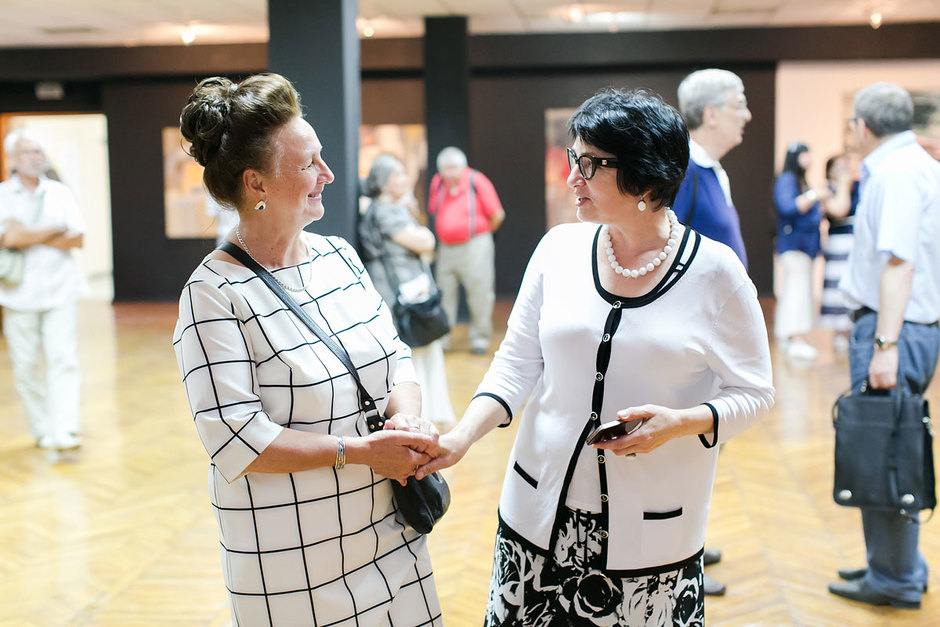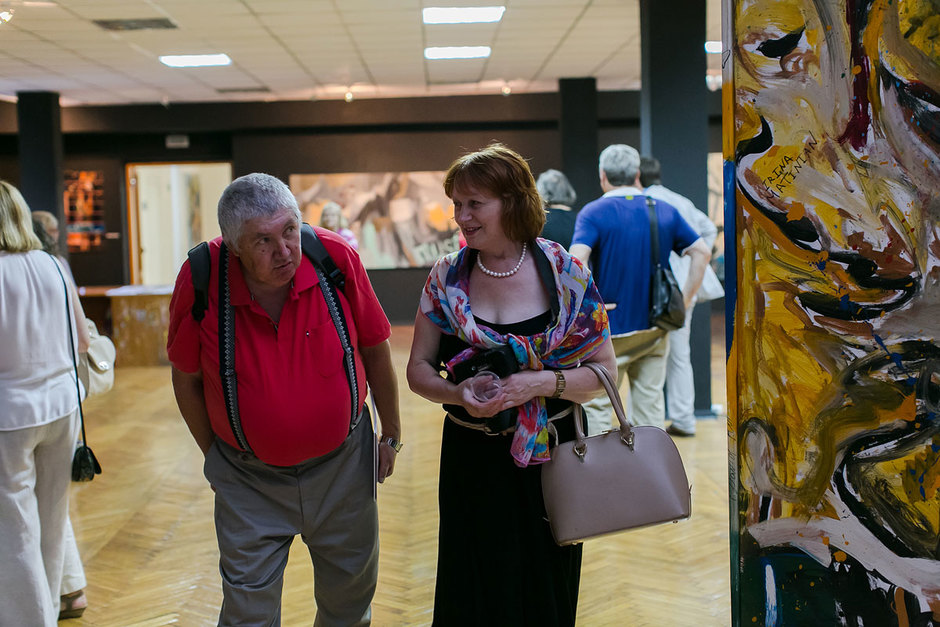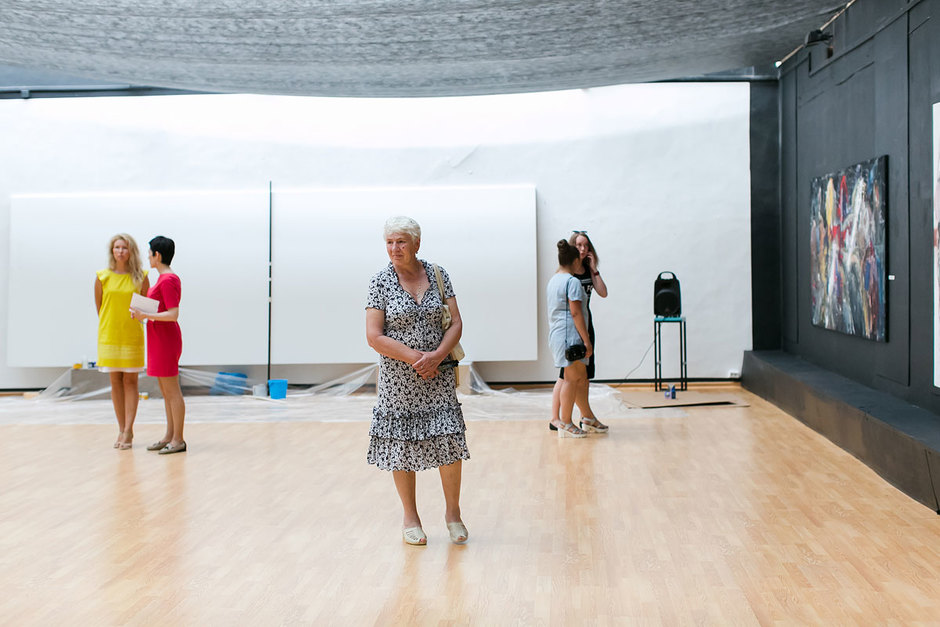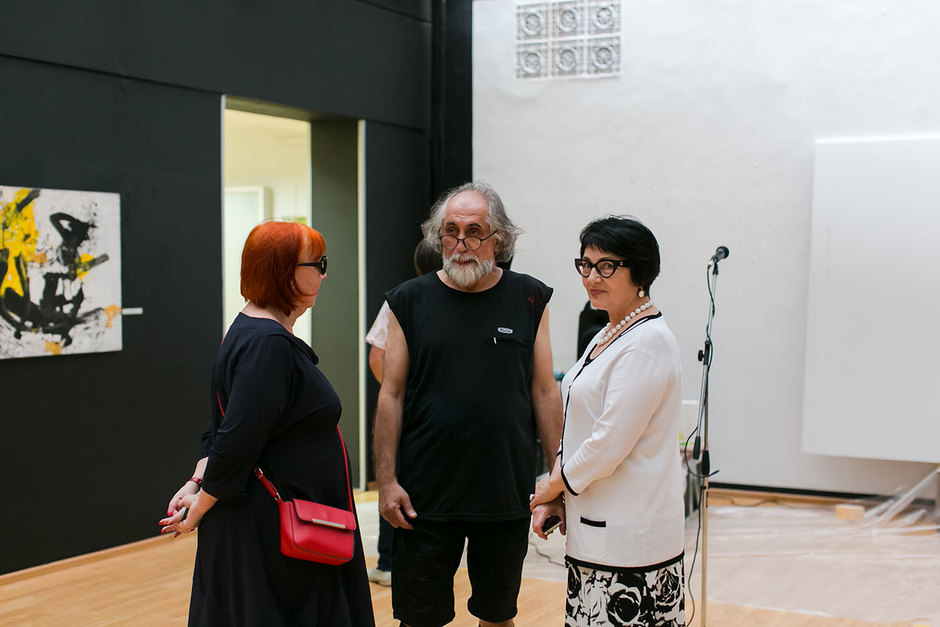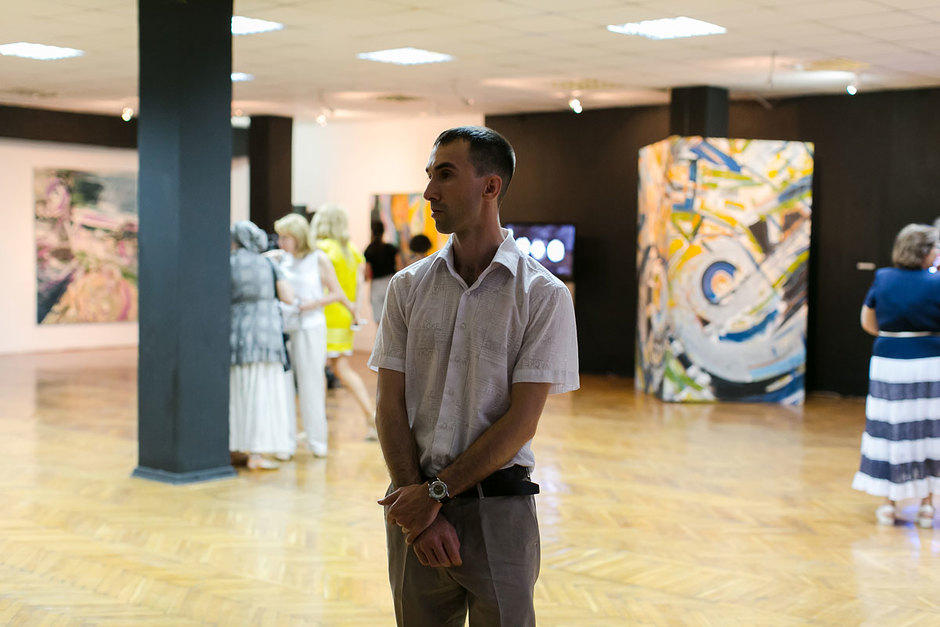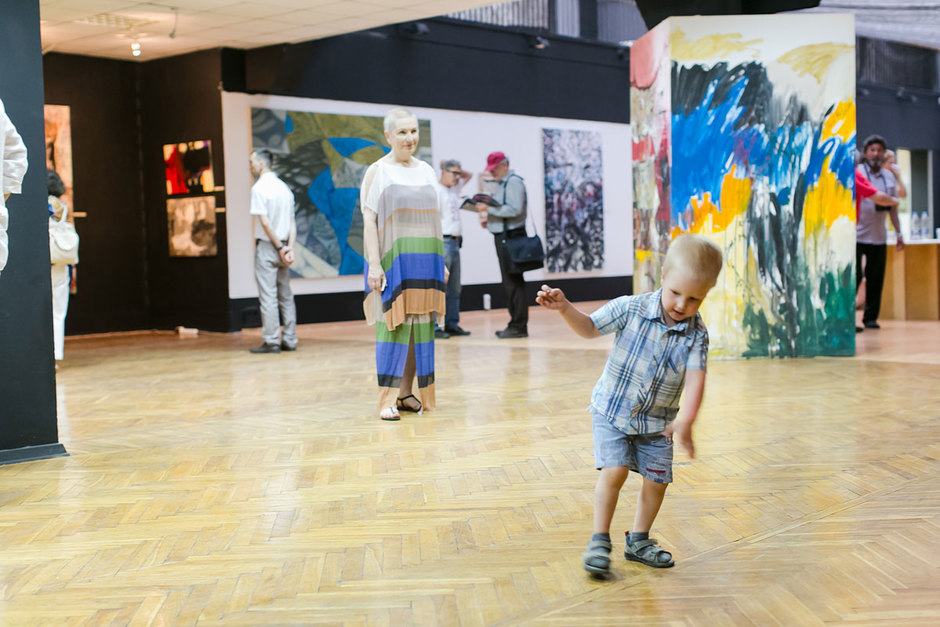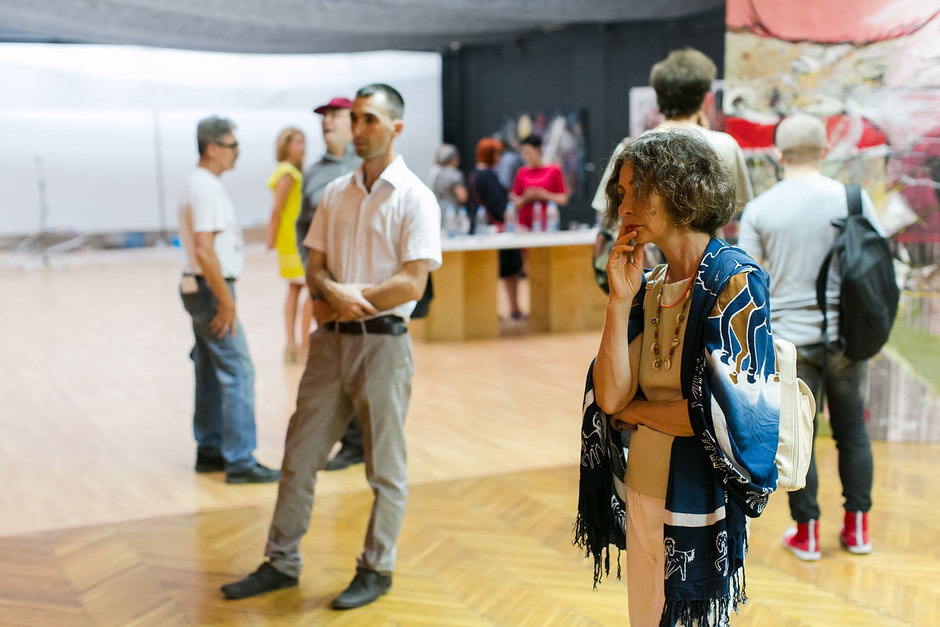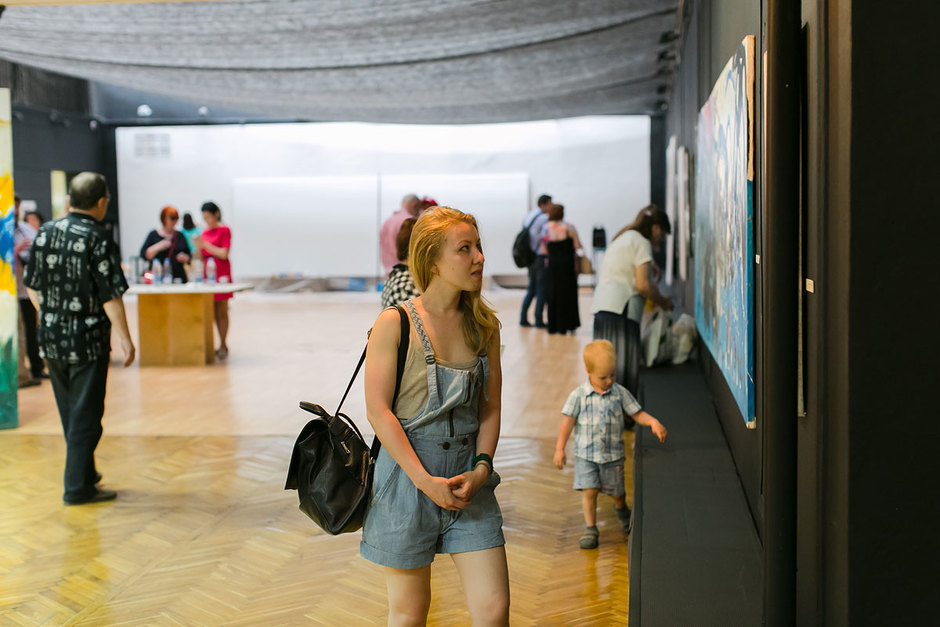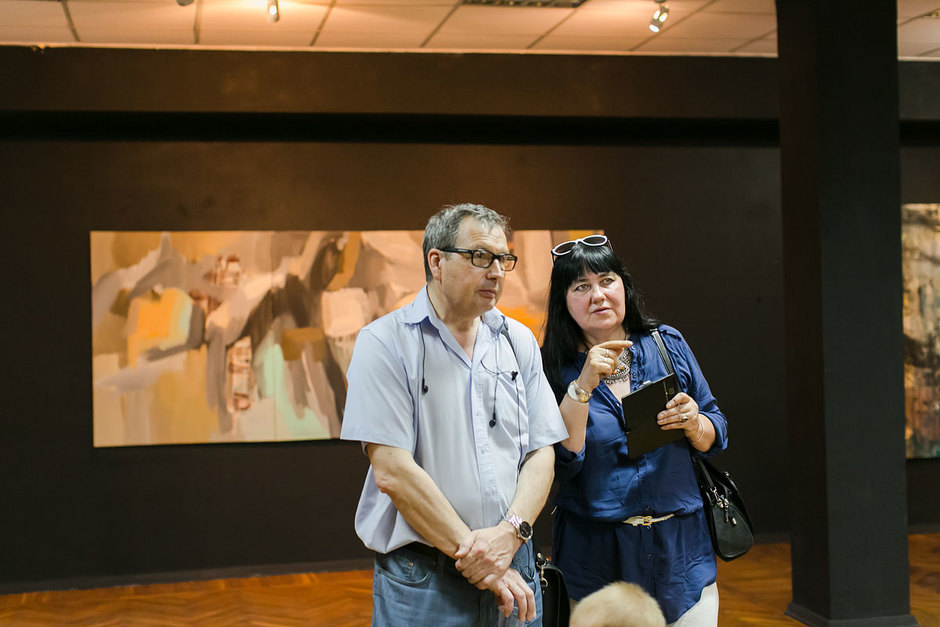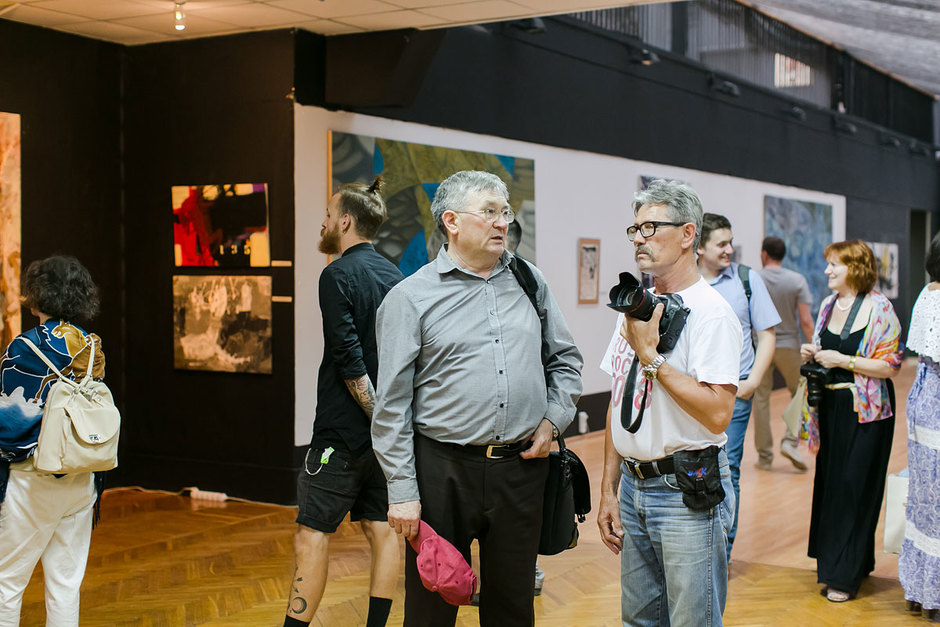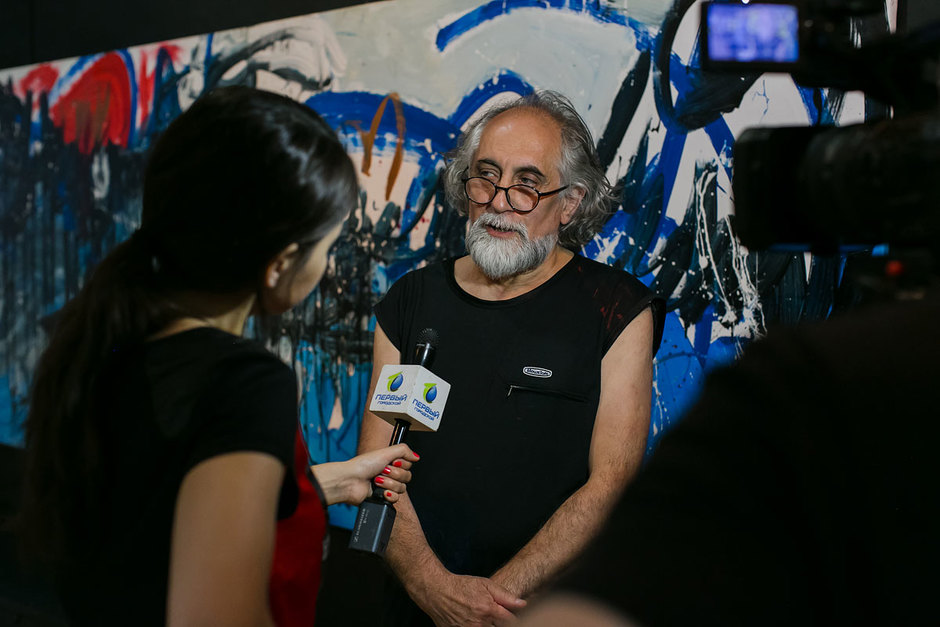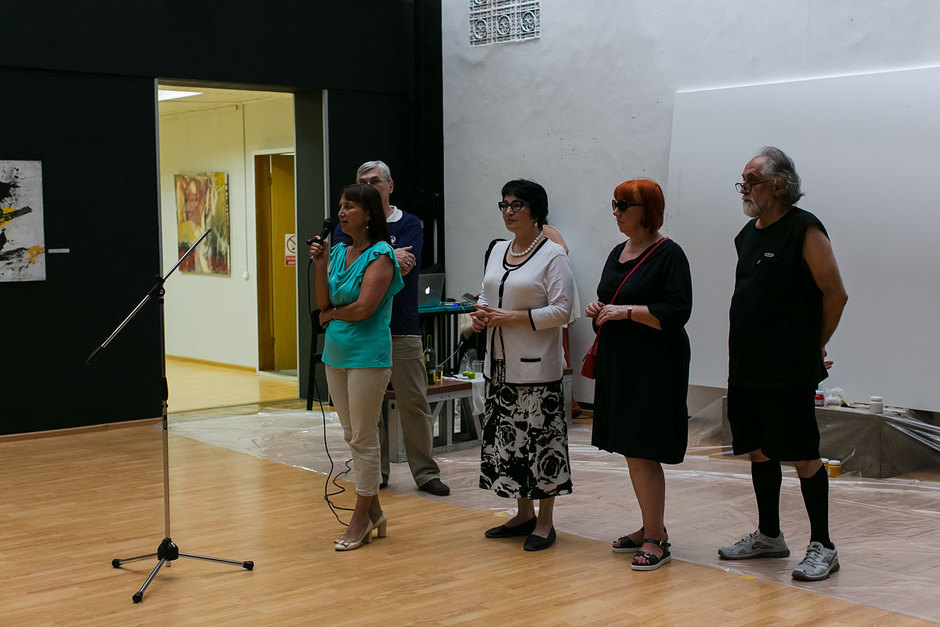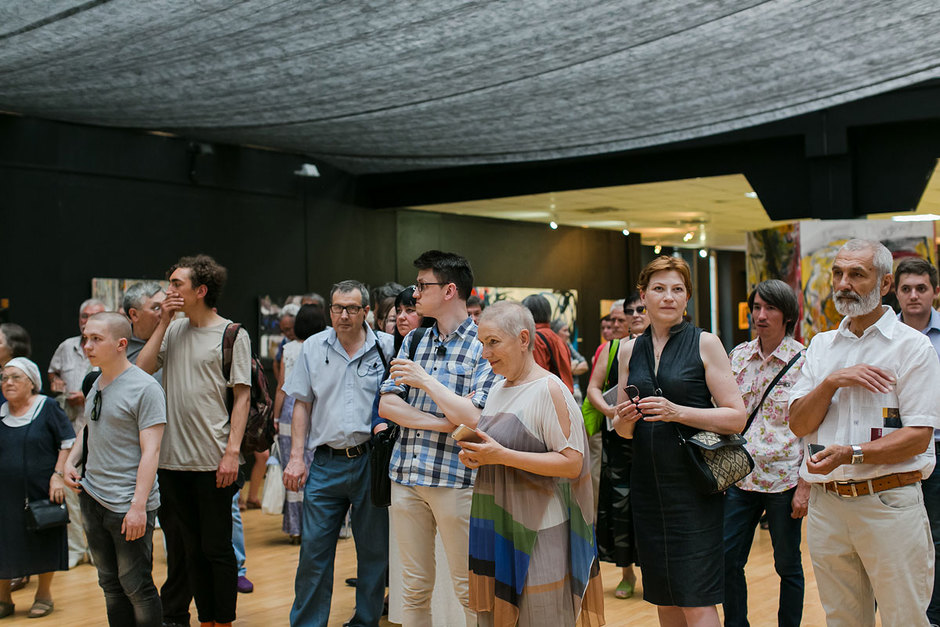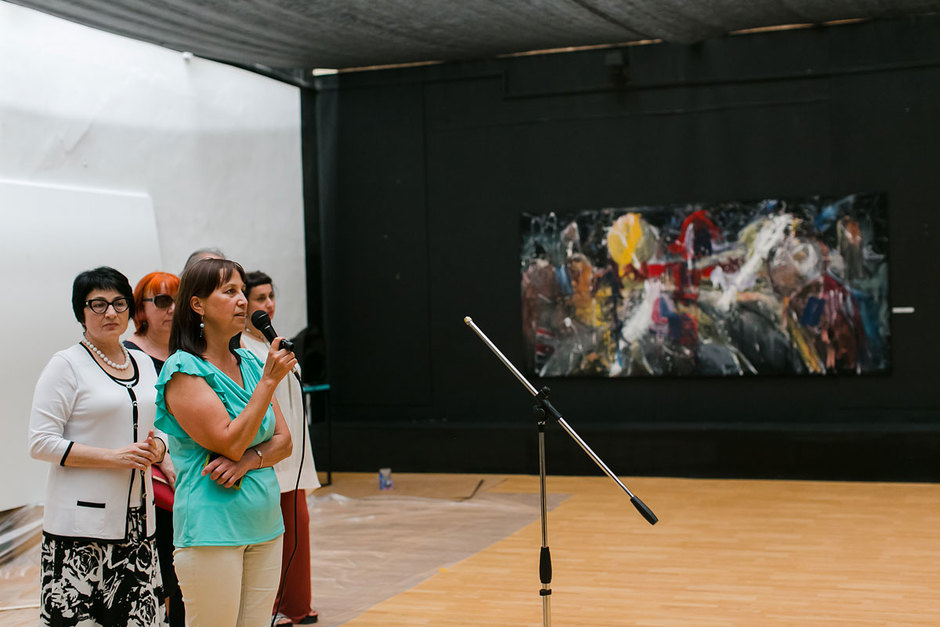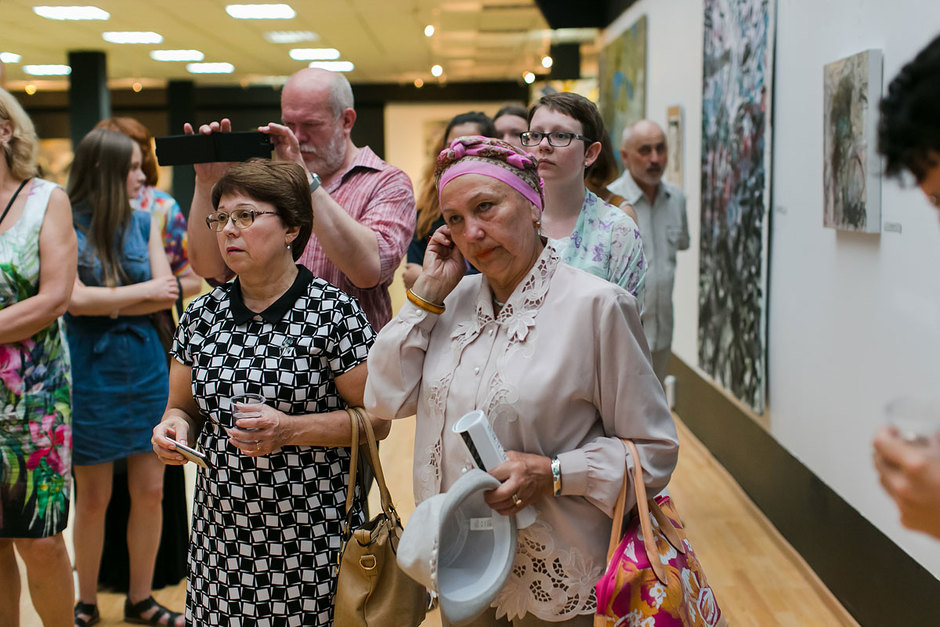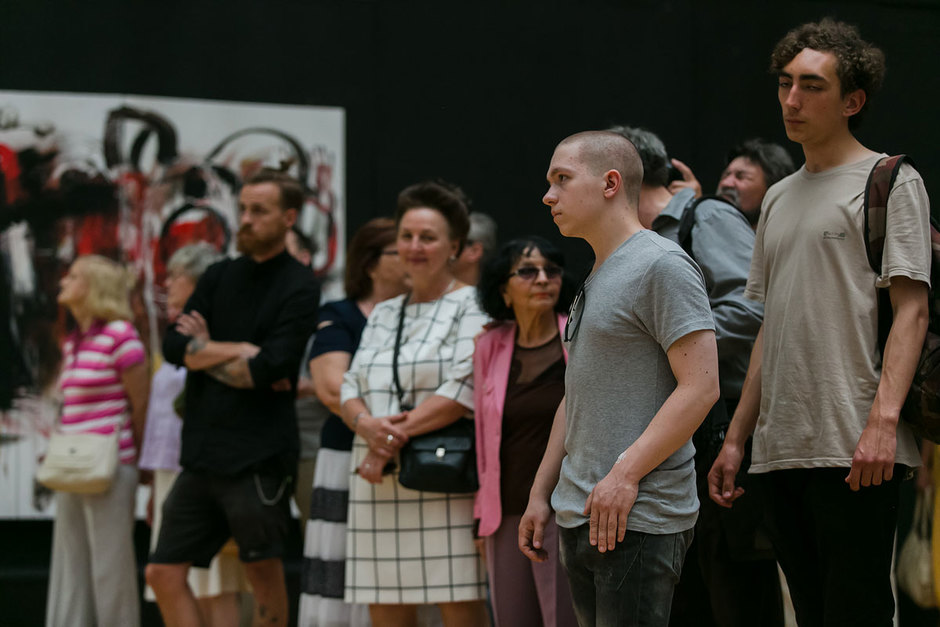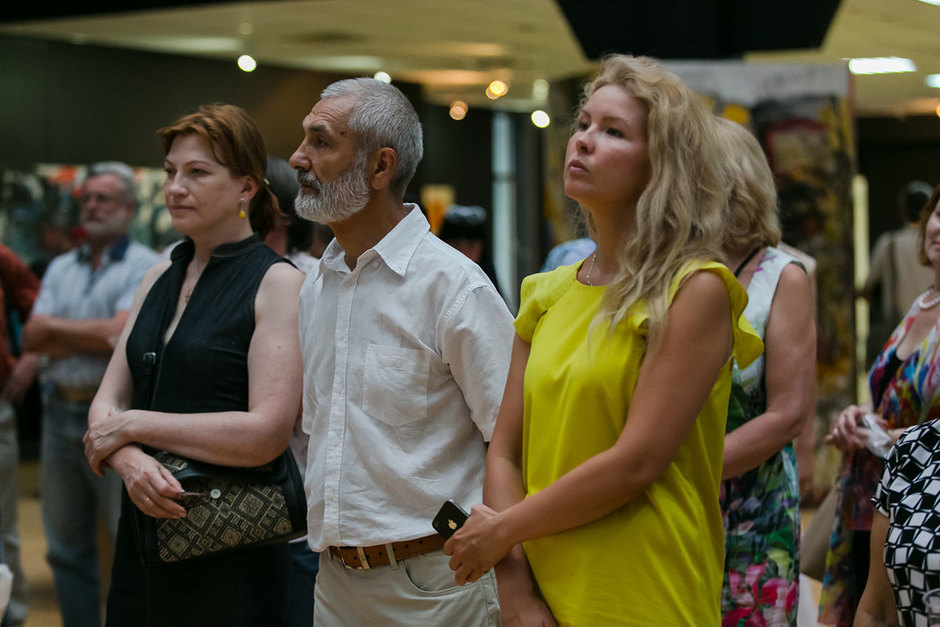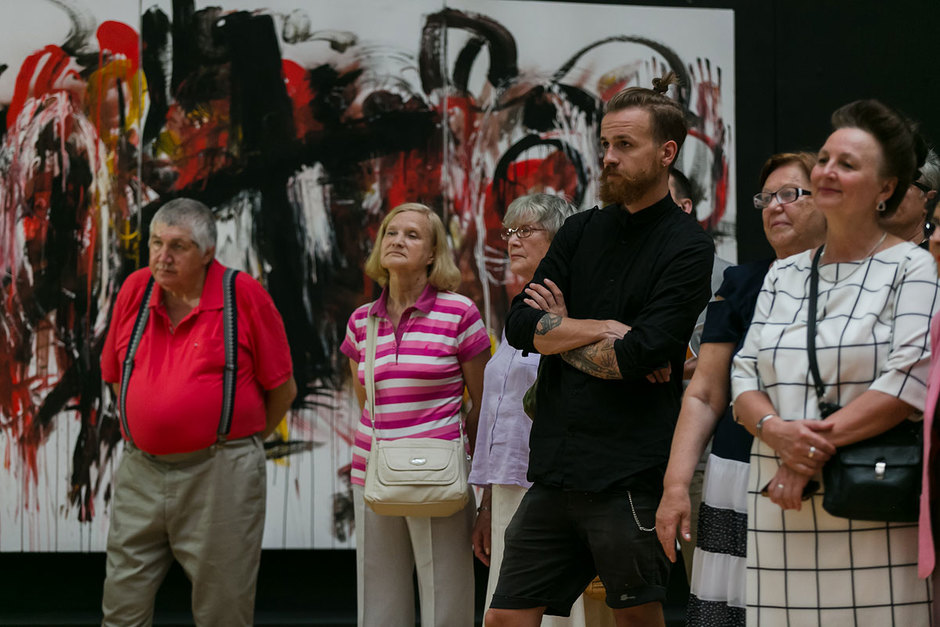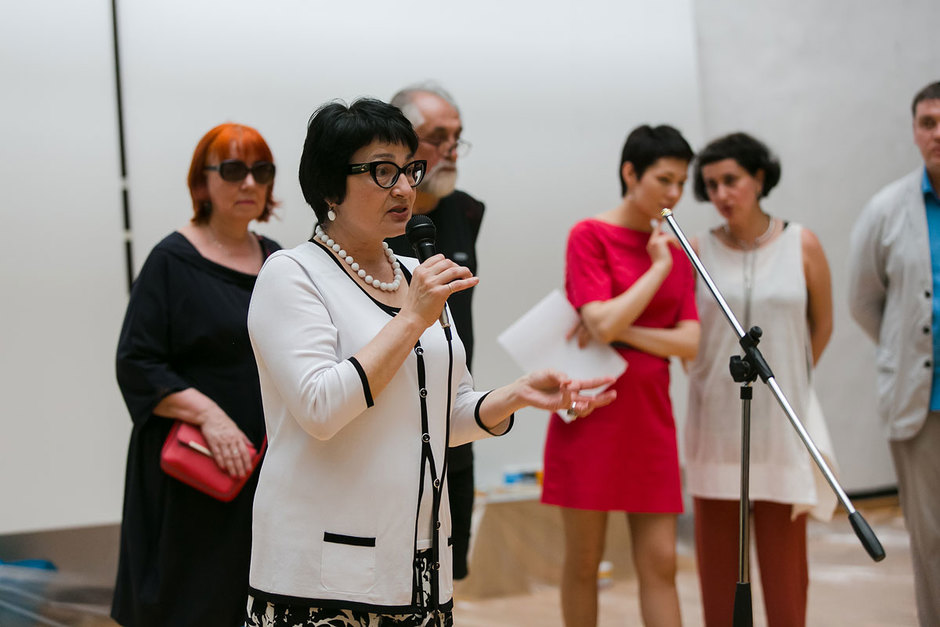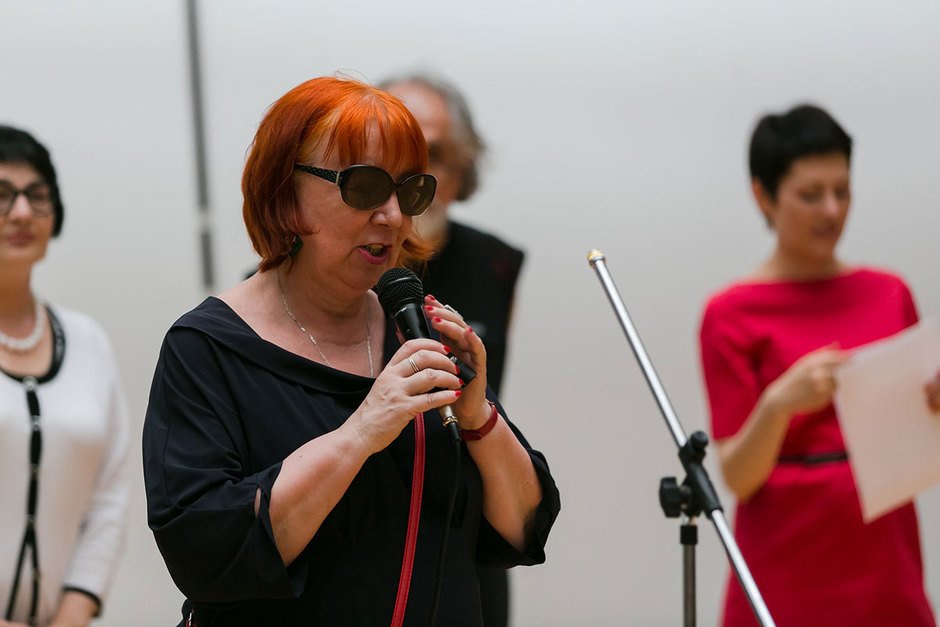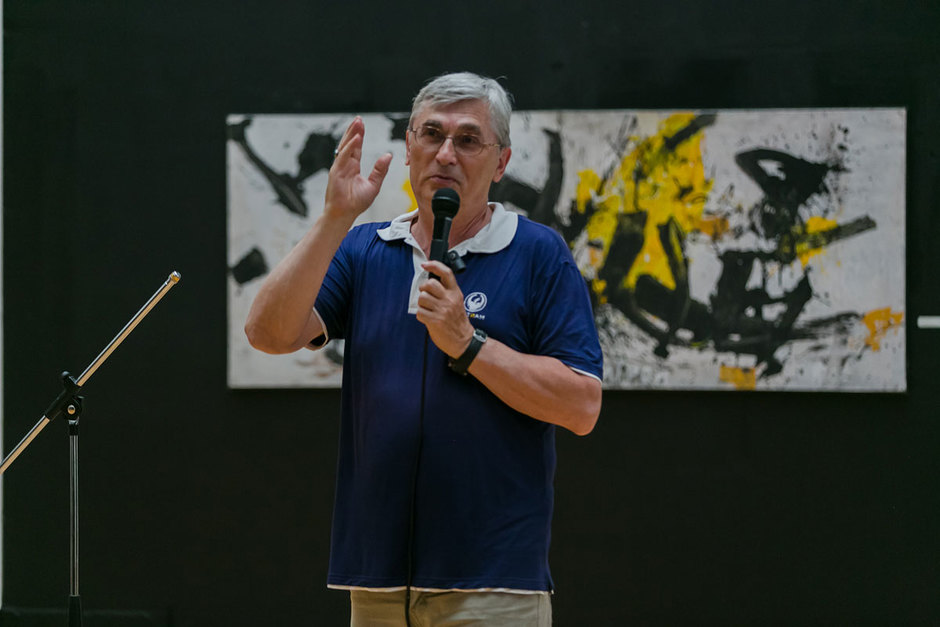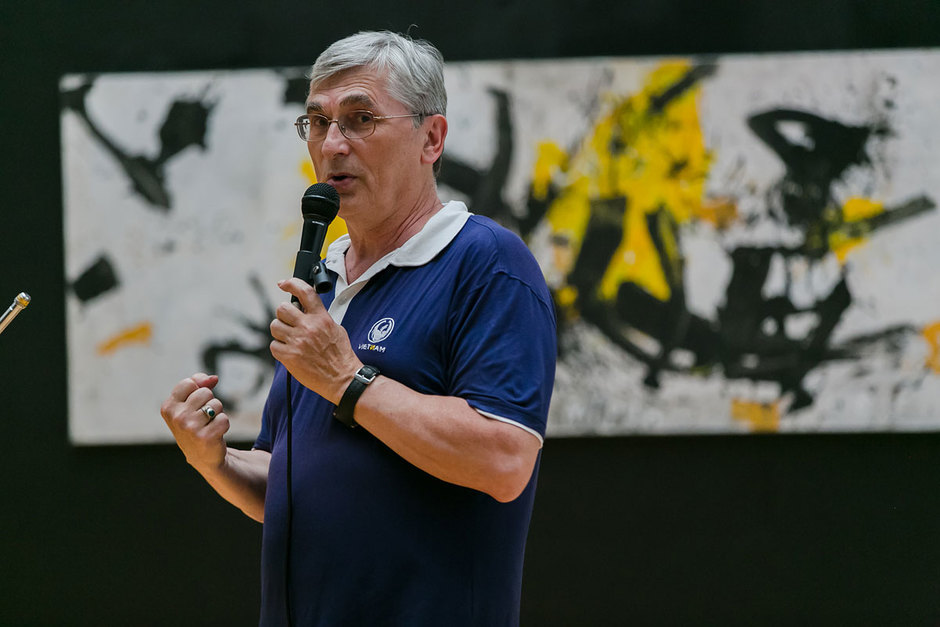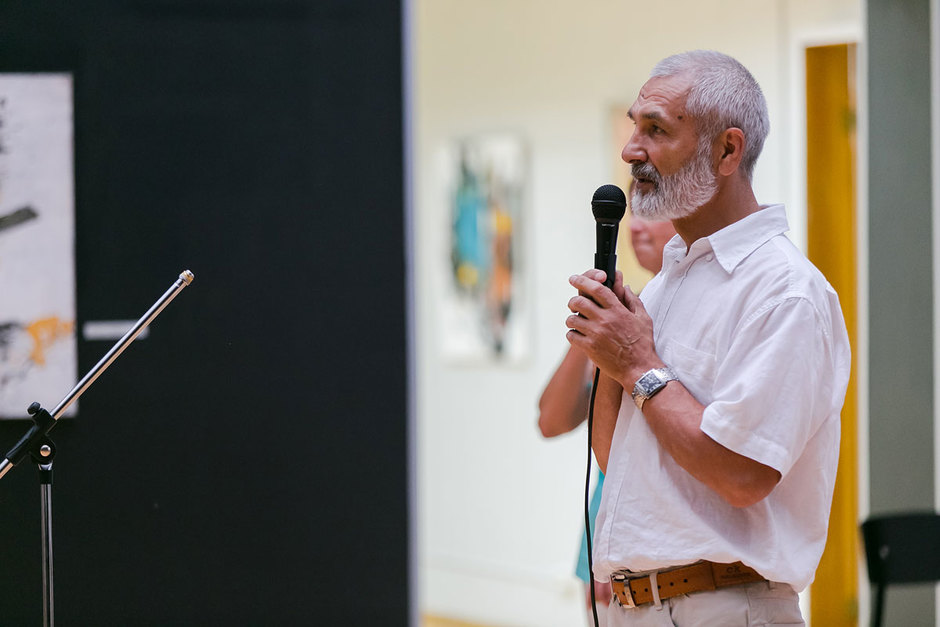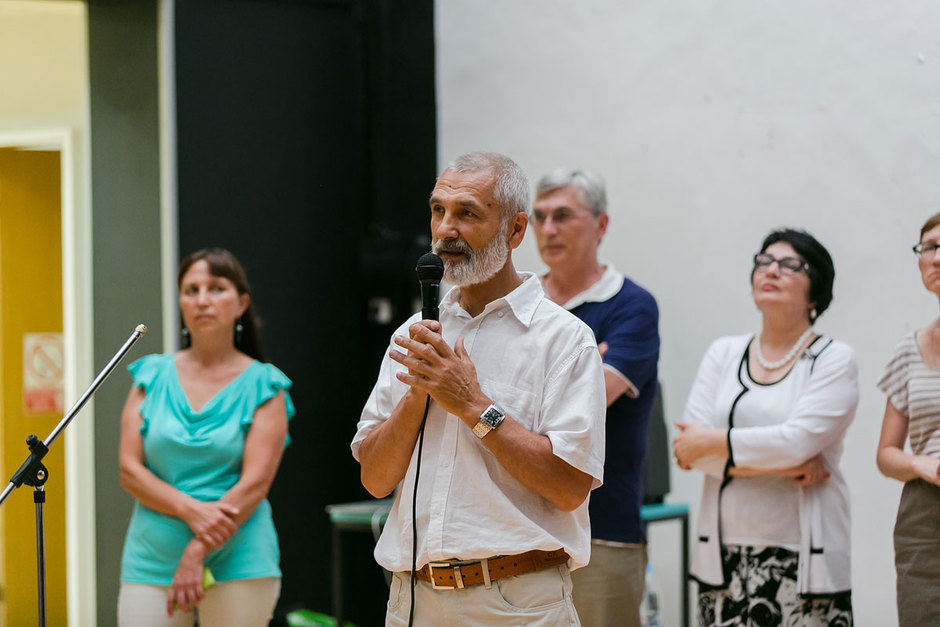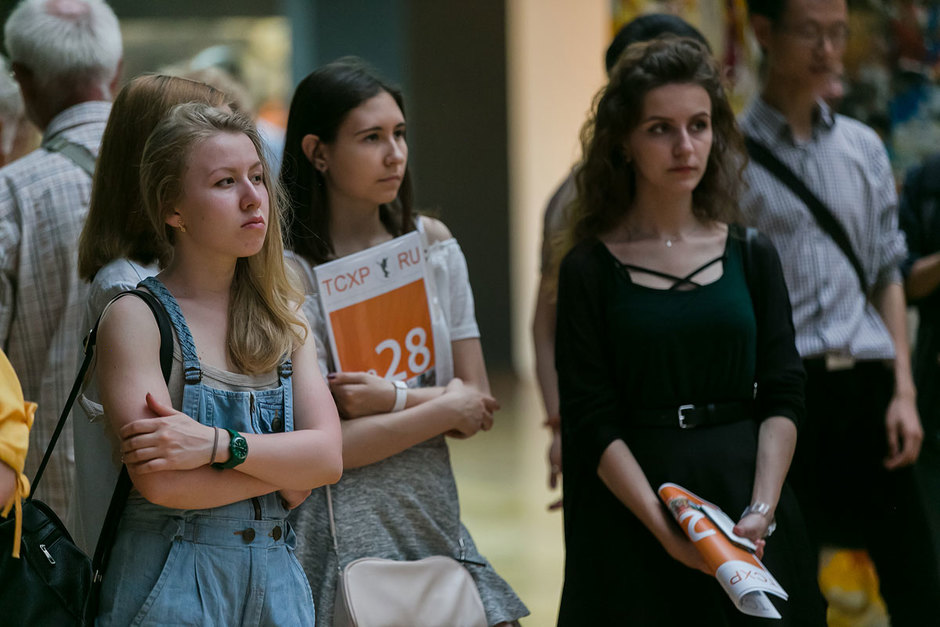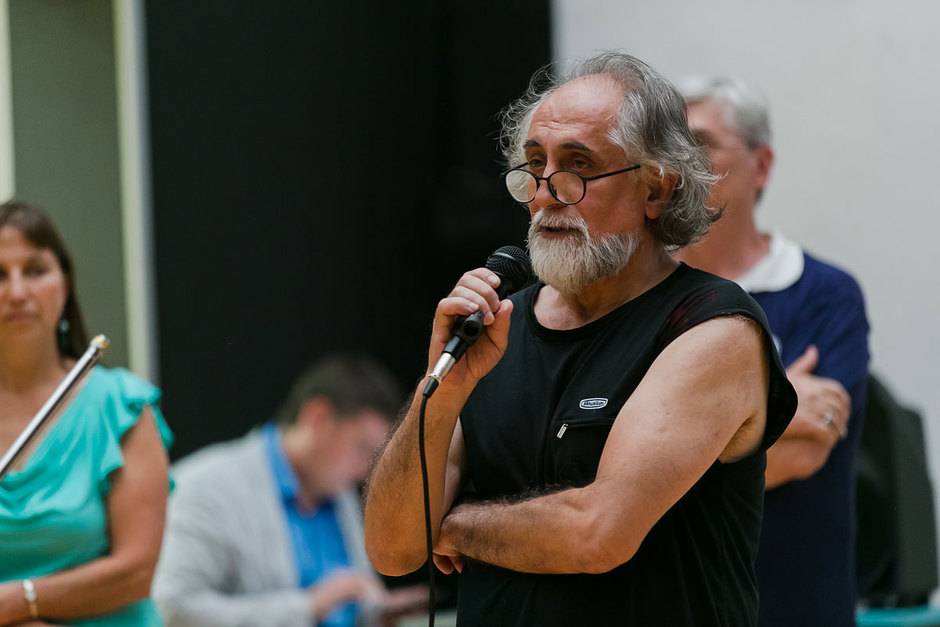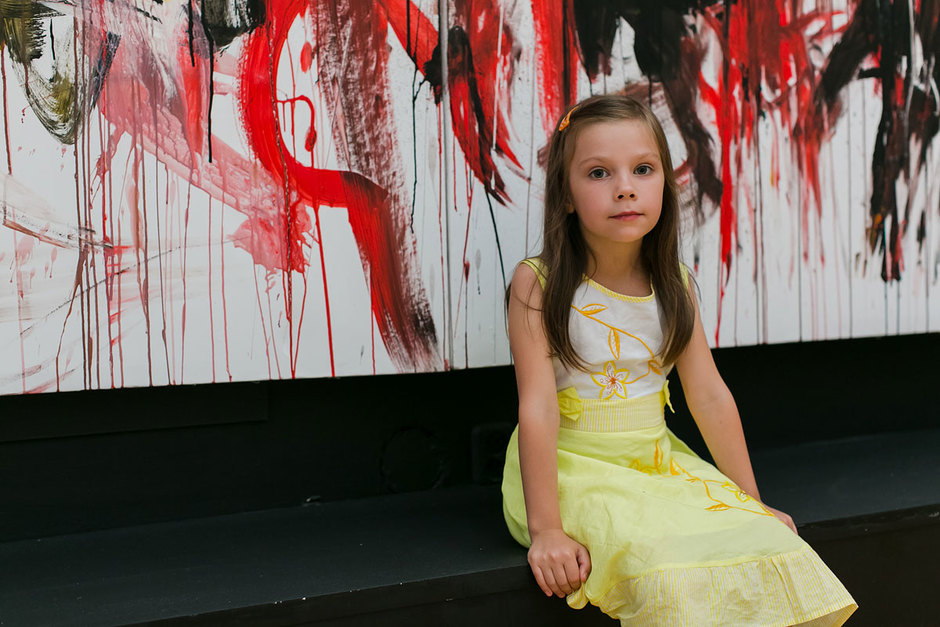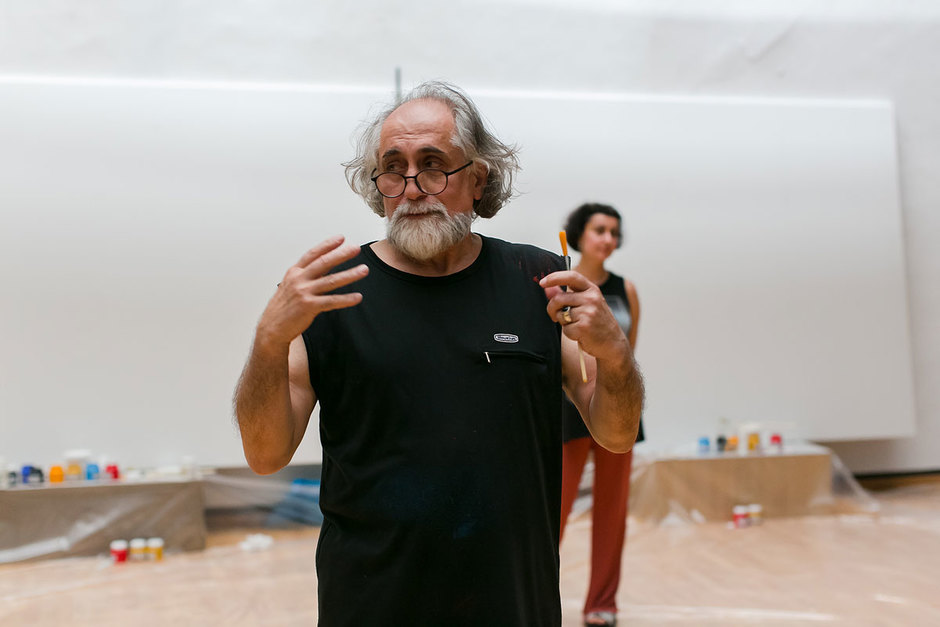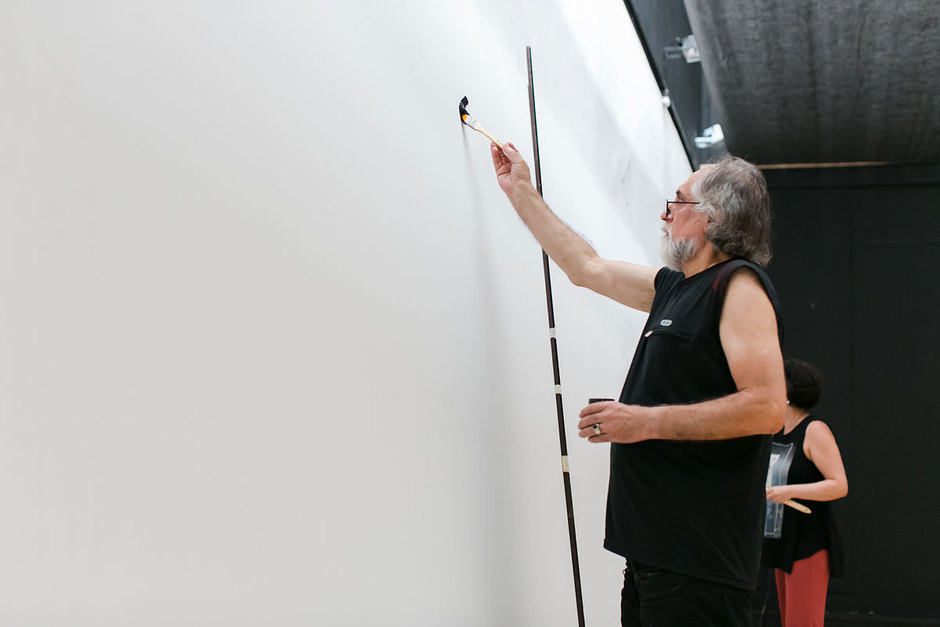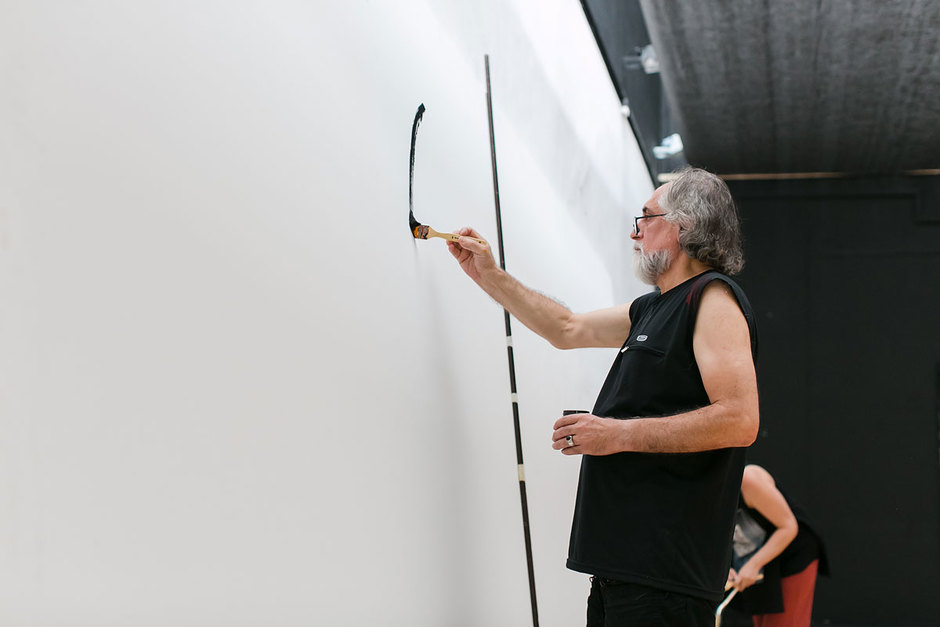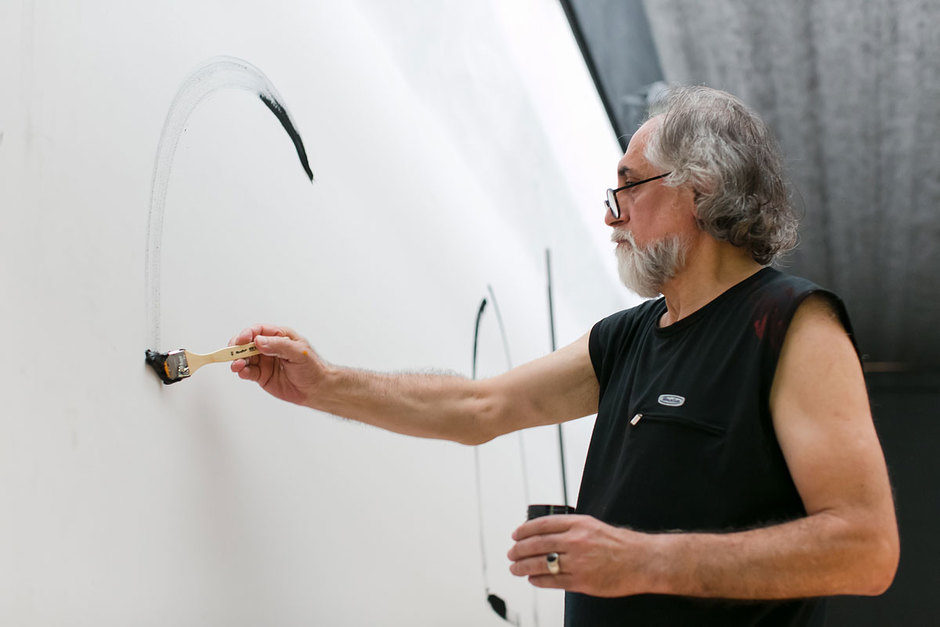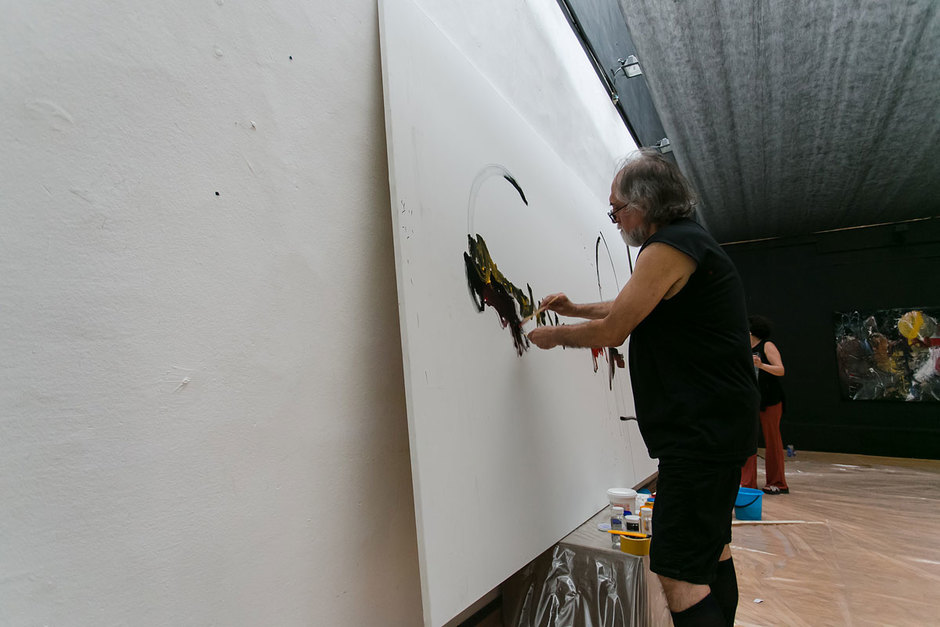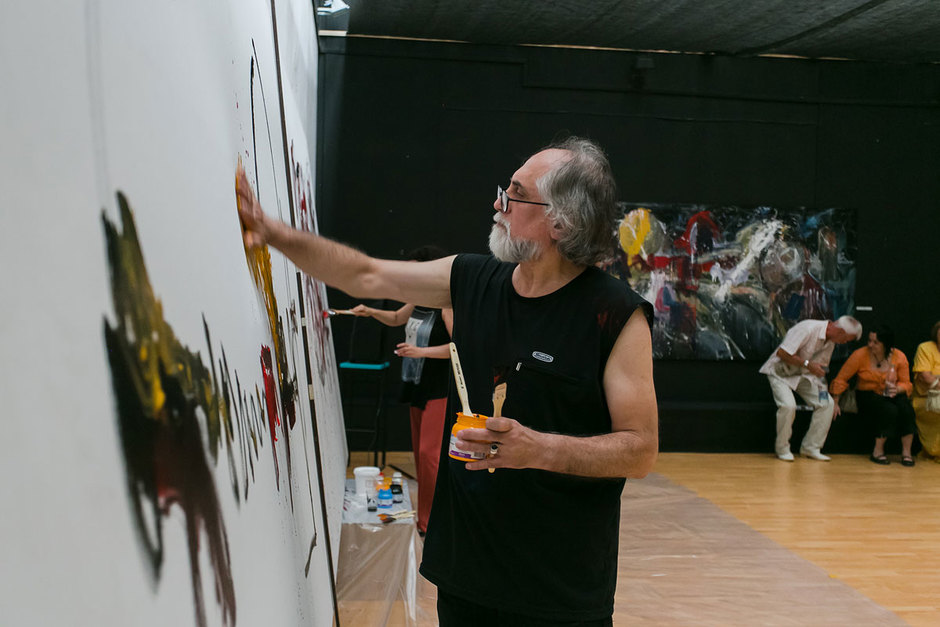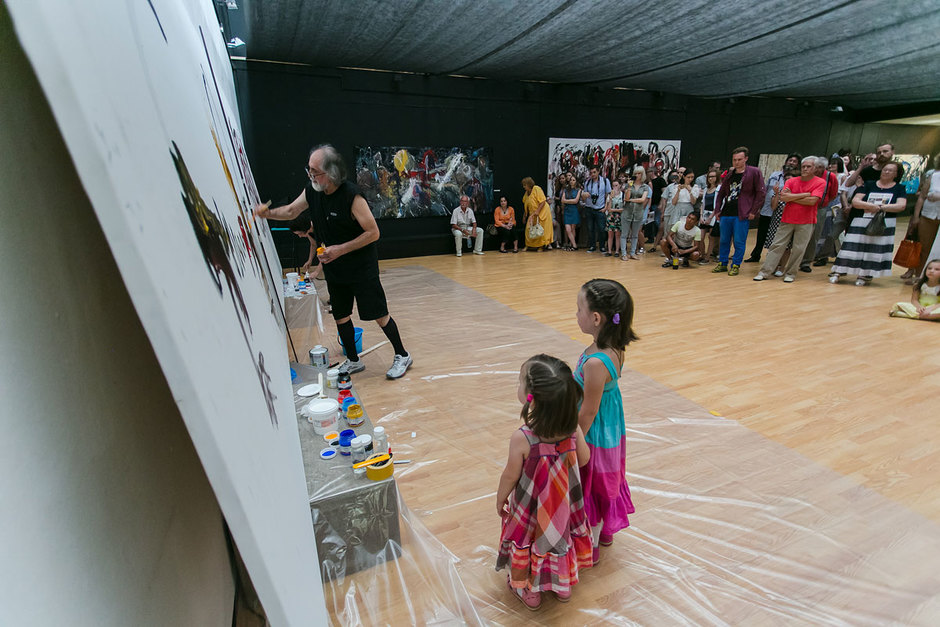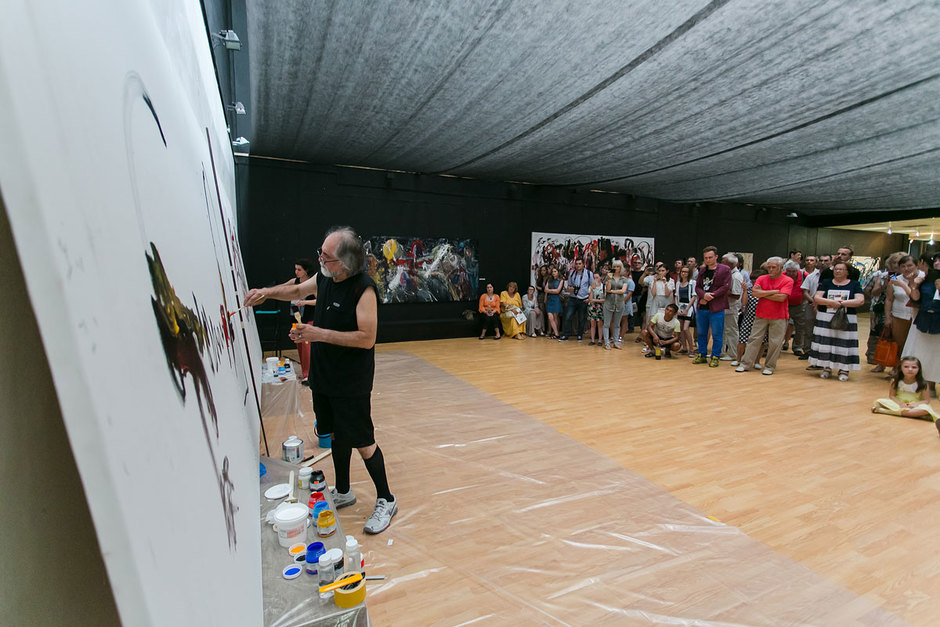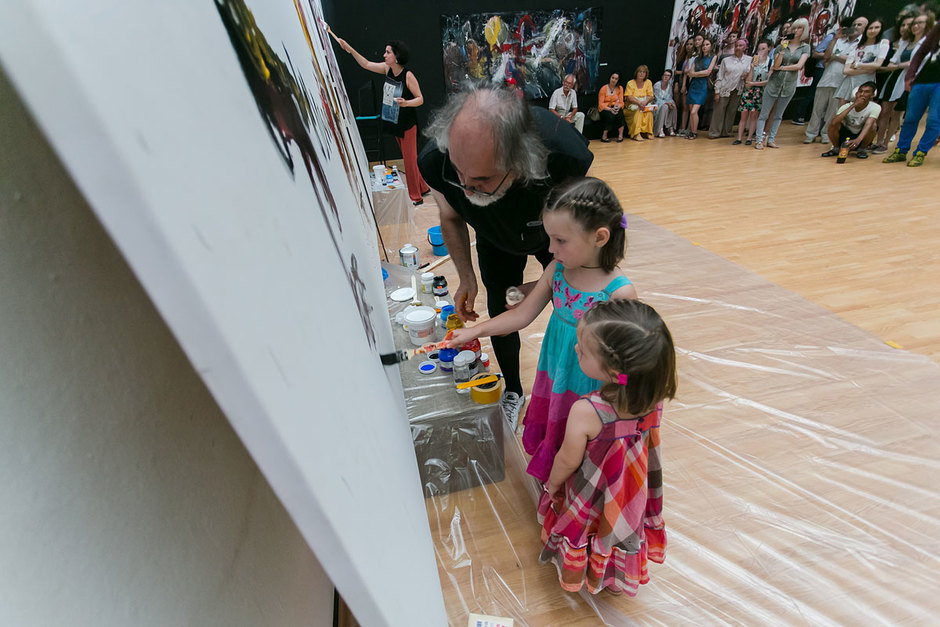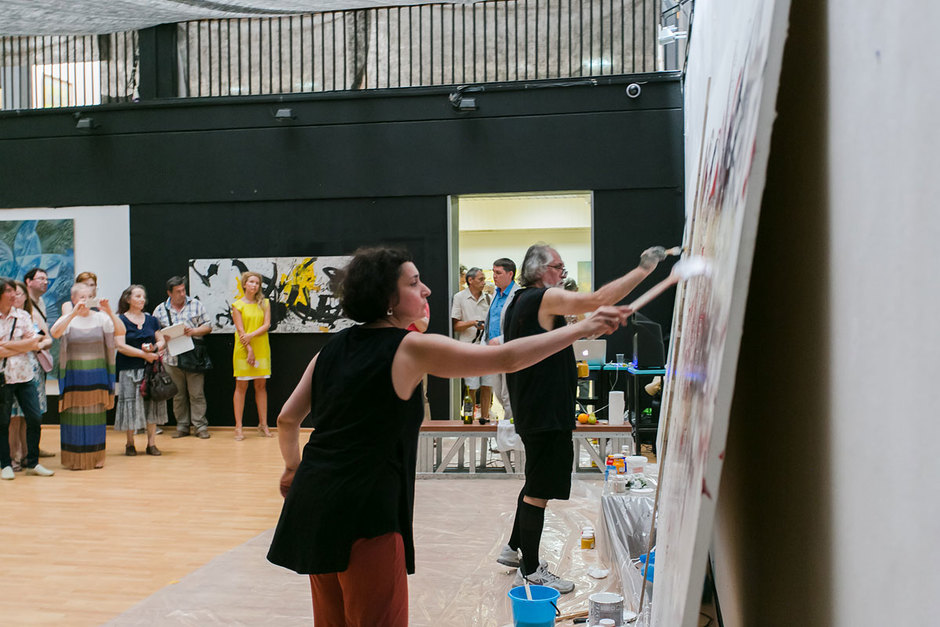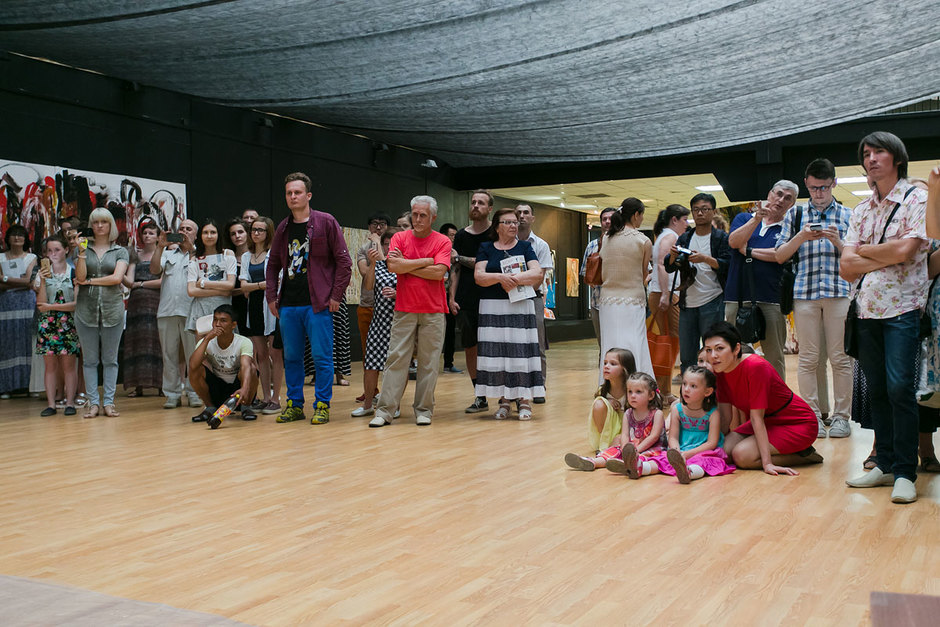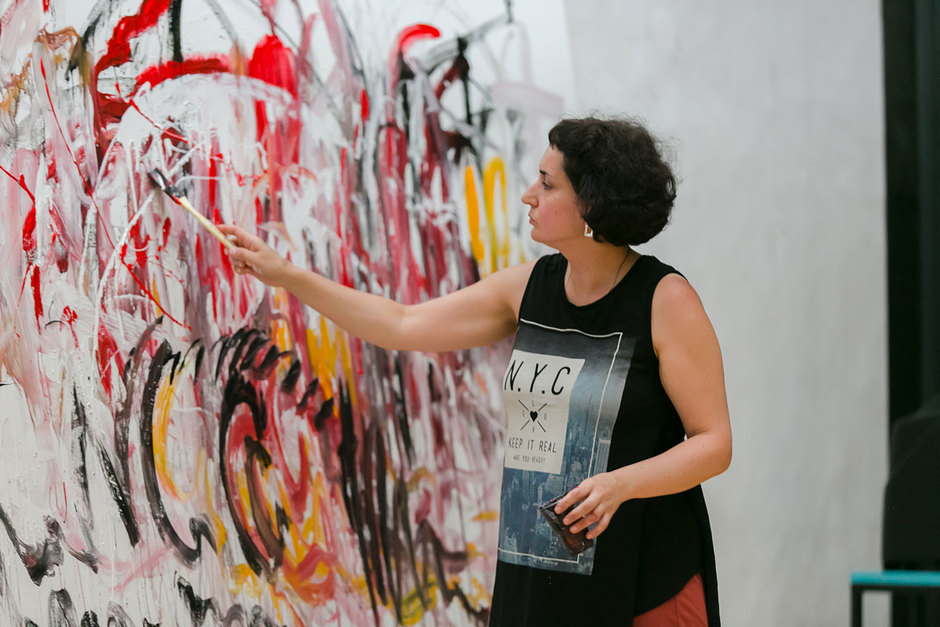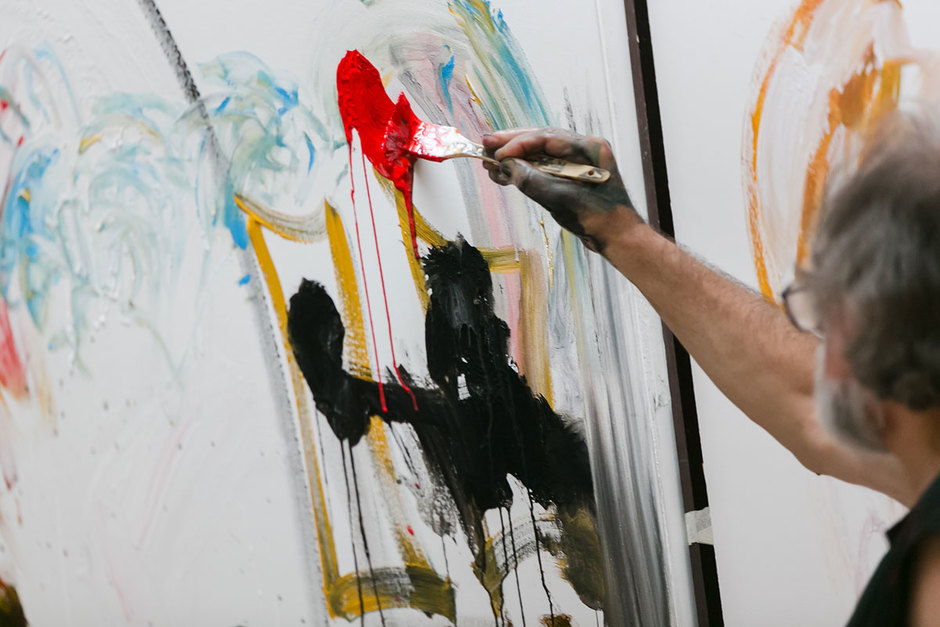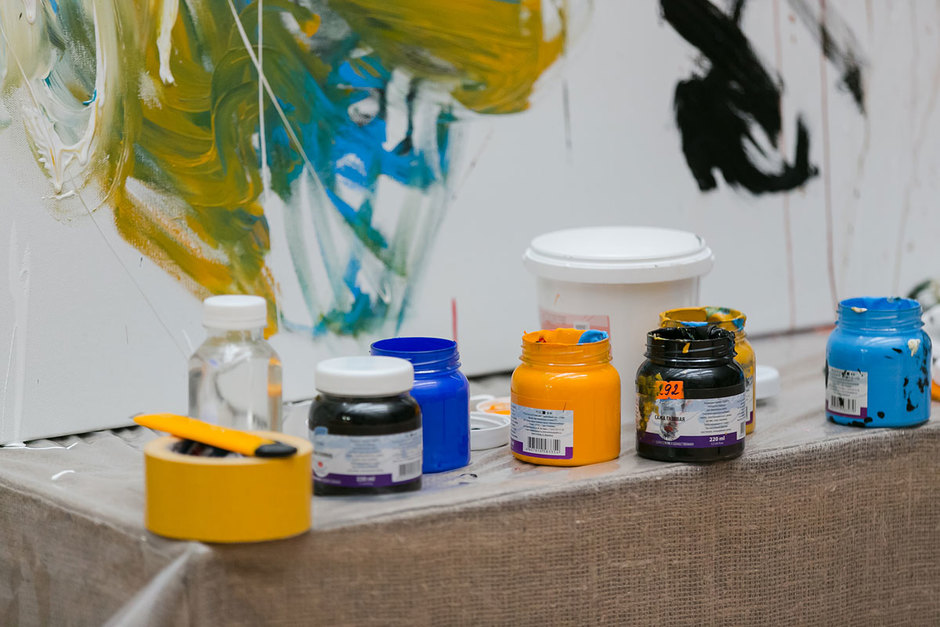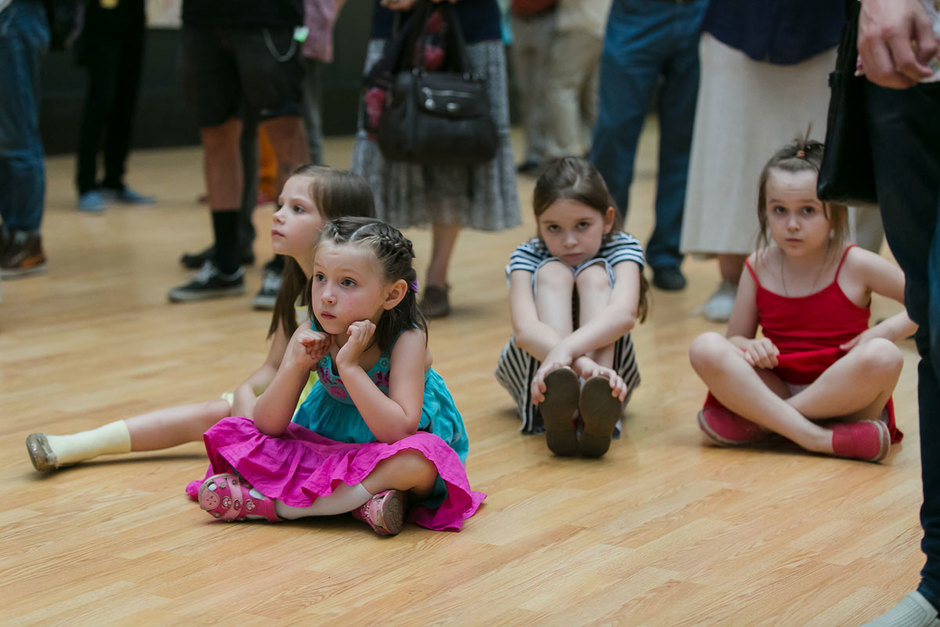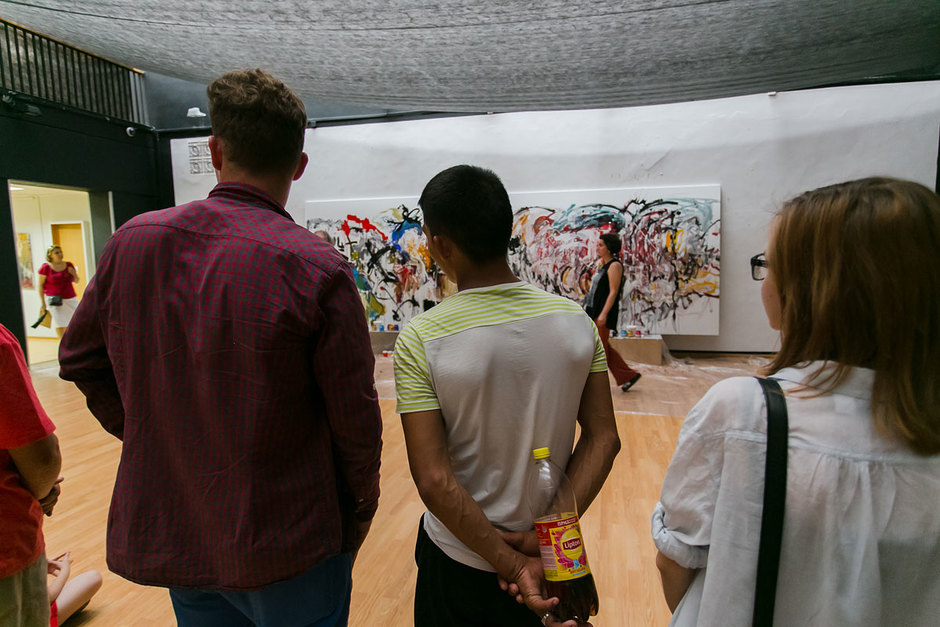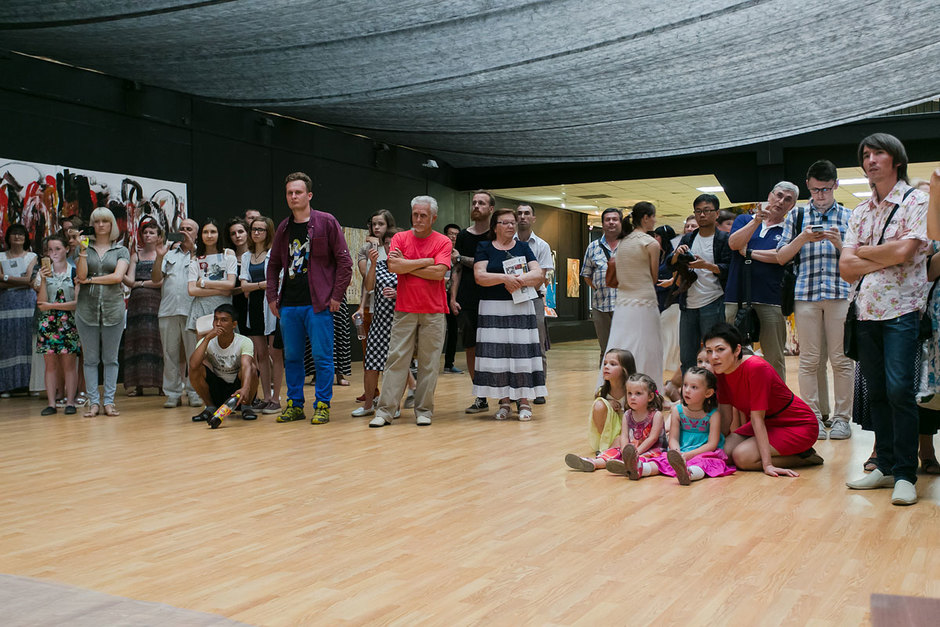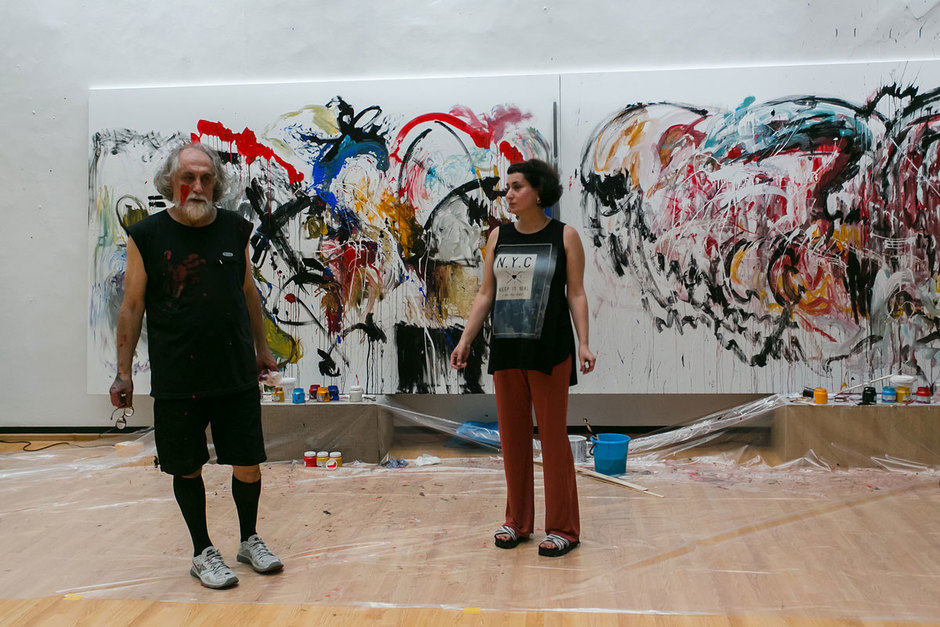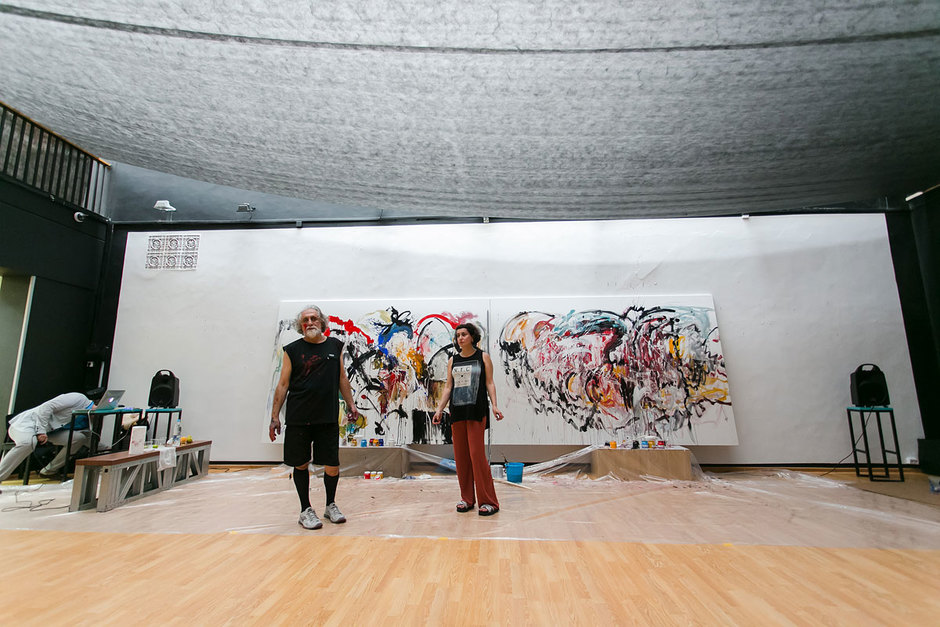‘The theatre of painting’ opens in Kazan
On 22 June, the first international festival 'Abstraction without borders' was opened in the Gallery of Contemporary Art in Kazan. The correspondent of Realnoe Vremya got acquainted with the controversial works of art displayed there. She also became a witness of how a painting in abstract style was being created.
'Abstract art — it is not a badly painted landscape'
The project 'Abstraction without borders' gathered 26 artists from 16 countries, its father-mastermind — David Babayan, whose works dominate in the exhibition. Babayan is from the galaxy of artists who remember the defeat of the Manezh exhibition by Nikita Khrushchev, and the paintings, literally put under the bulldozer in the Bitsa Park. Abstract art, which quite favourably was accepted in the West, literally fought for its place in the former USSR.
In the exhibition, for example, there is a painting of Boris Ionaytis, unfortunately, already deceased. At his time, he told the author of these lines about how the artists were 'pursued' by the 'bulldozer' exhibition. For many years, at the beginning of November there came a car and the unreliable artist was taken to… a psychiatric hospital. Now it's hard to believe, but it was so.
In 'the house of sorrow' the group of unreliable was kept in the wards until the moment the October holidays passed; however, no repression was applied to them, they just were not released. After the fireworks of the next anniversary of the October revolution died down, they were allowed to go home. The government was afraid of 'informal' artists, those who preferred to paint something incomprehensible at first glance and ignored the workers and collective farmer women as subjects of the image.
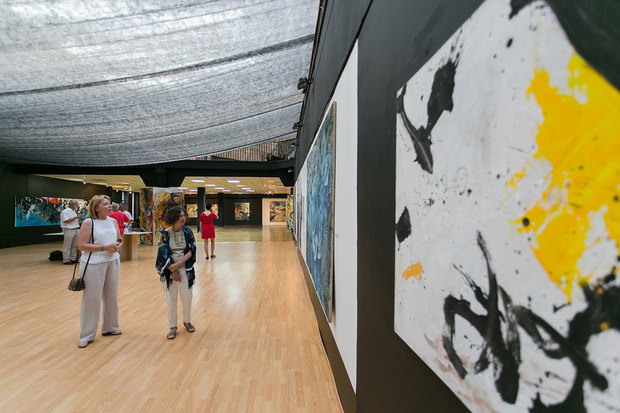
The abstract artists with their strange creative platform and ideology was a threat to the authority: they didn't fit into fictional canons of socialist realism — that means they were equal to the dissidents.
'There are a lot of rumors and legends regarding abstract art. For example, some people believe that poorly painted still life or landscape is an abstract art. Of course, it is not. In such cases I tell them to give me three easels, on one of them I will paint a landscape in an academic manner, on the other — it will be in impressionistic, on the third — an abstraction,' says David Babayan.
His own works are like filled with colour and light, they resemble clots of cosmic energy, solar wind, lunar rustle. However, everyone will see in them something their own.
'I know what books he has read'
The paintings are deliberately not named at the new exhibition. We can only see the name of the author and the country he represents. Babayan does not want to limit the imagination of a viewer, who in this case is not just a spectator but a participator of the process. The depth of perception, in this case, is directly proportional to the cultural background of a spectator.
One of the epigraphs to the exhibition — the words of Peter Greenaway, who said that 'if you have eyes, it does not mean that you can see'. To answer this quote I can only with the quote from Antoine de Saint-Exupery: 'The eyes are blind one must look with the heart.'
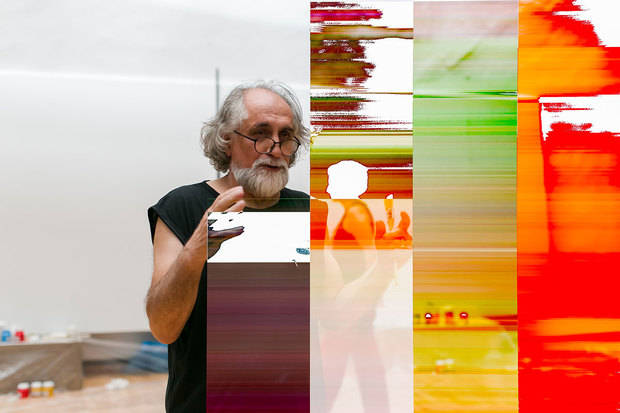
However, the perception of abstract art needs more than just the heart, you also need the brain. But, more importantly, you need inner freedom, the courage to get rid of stereotypes in the perception of art. Sixteen artists participating in the exhibition they are like sixteen encrypted worlds, but it is quite real to find the encryption key to each of them. By the way, a pleasant surprise: the exhibition includes the work of several Kazan authors.
'You think it is easy to paint an abstract painting? Just put a blot? No, it does not happen. A blot will be a blot. When I see a work of an abstract artist, I know what educational institution the author graduated from, what books he has read and what music he listens to,' once said the artist, far from the abstraction, Ilya Glazunov. If you look at the works of great artists, you will see a huge number of sketches, a lot of work — all this confirms the words of Glazunov.
On 22 June, in the Gallery of Contemporary Art, the spectators could witness the birth of a painting. David Babayan was creating his world on the canvas under the music. The result of 'the theatre of painting' will remain in Kazan: the picture was presented to the State Museum of Fine Arts of the Republic of Tatarstan.
